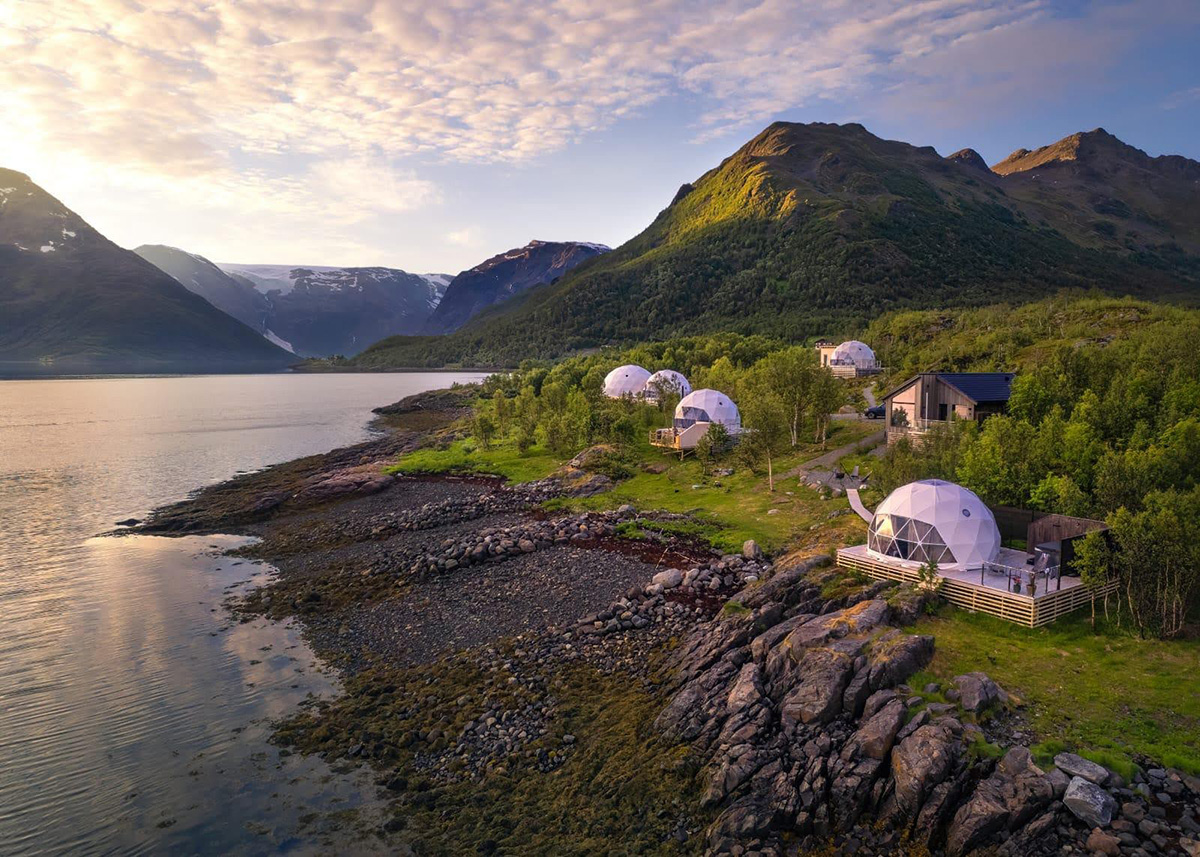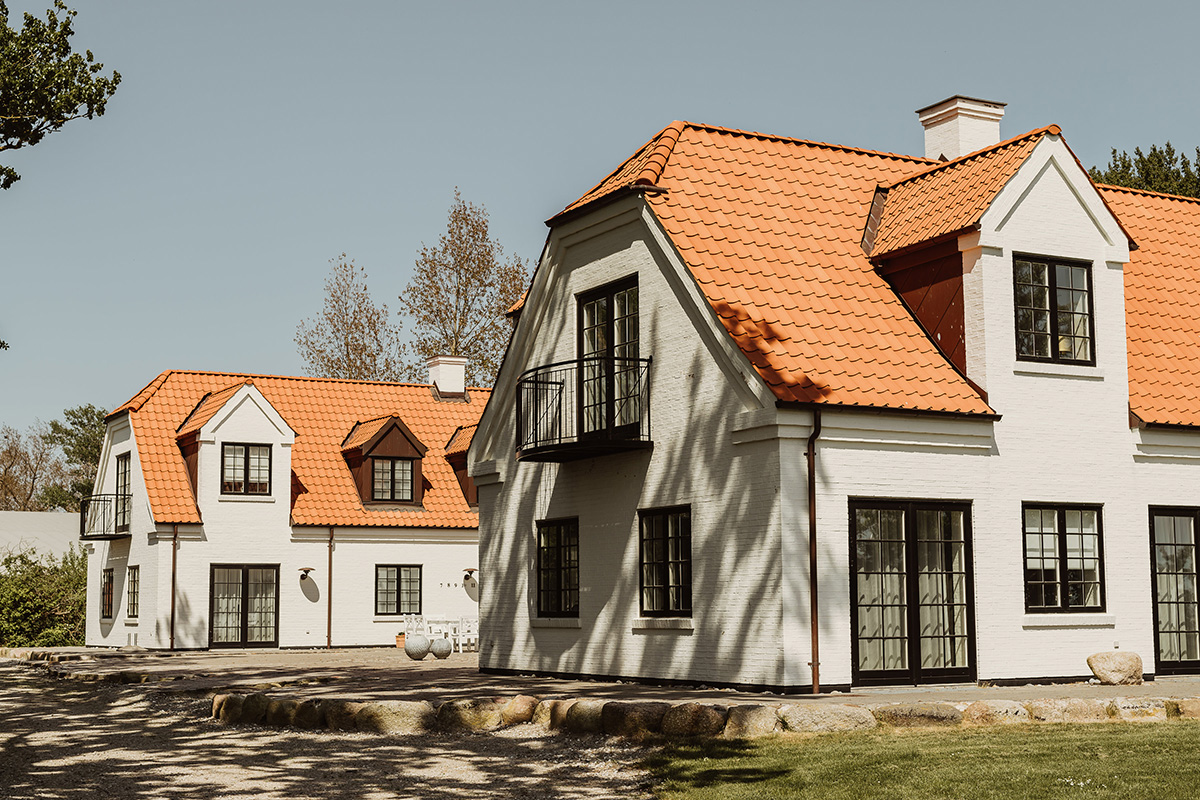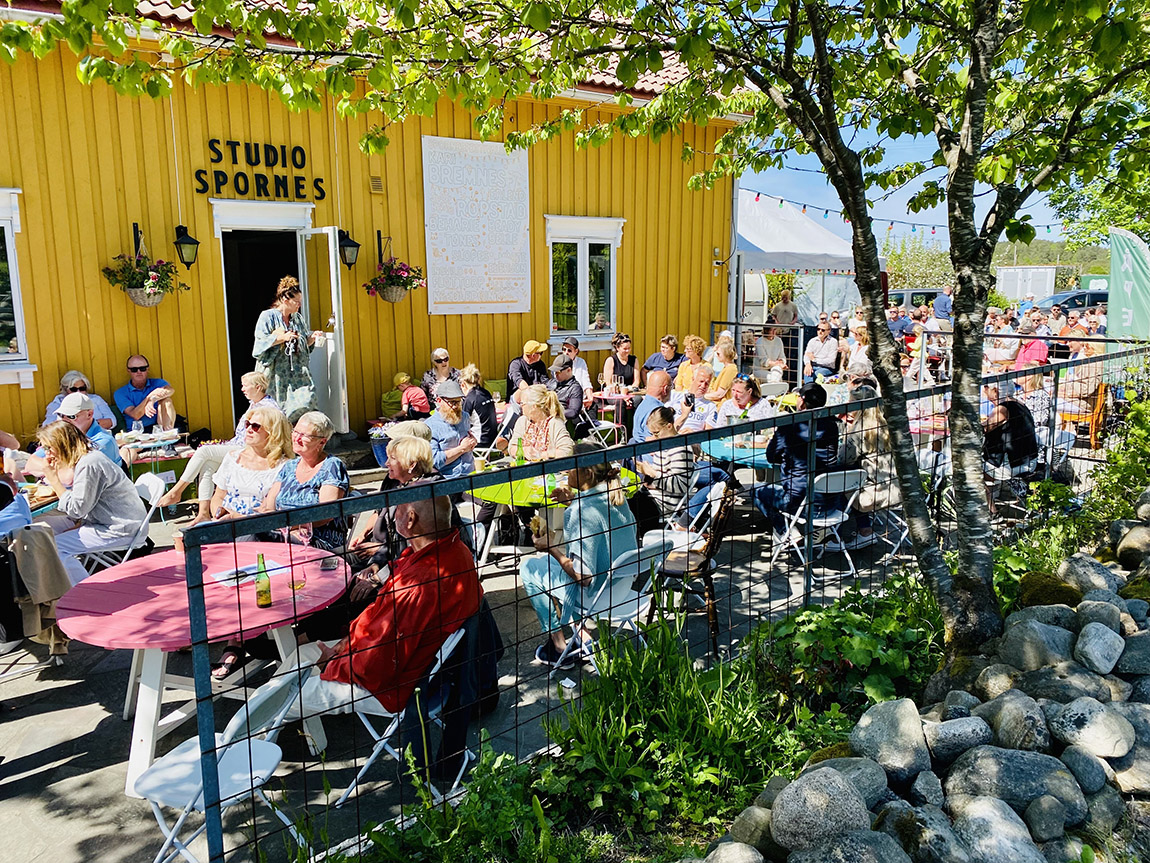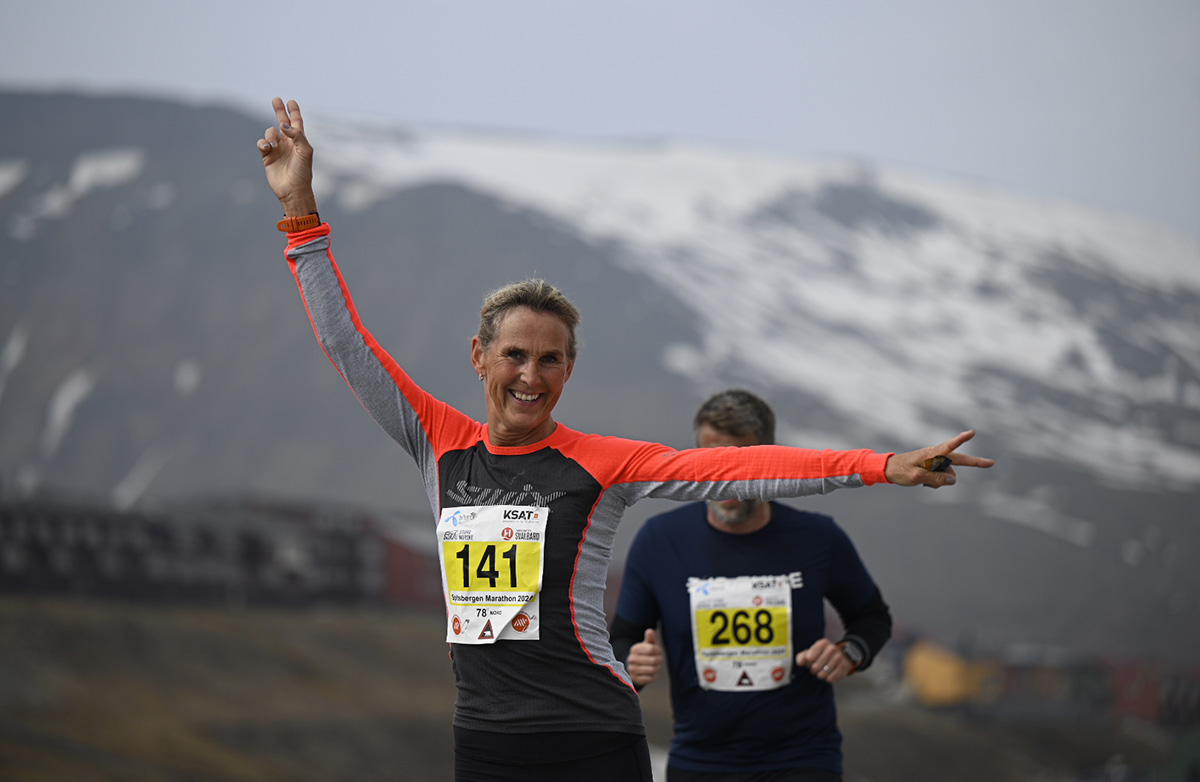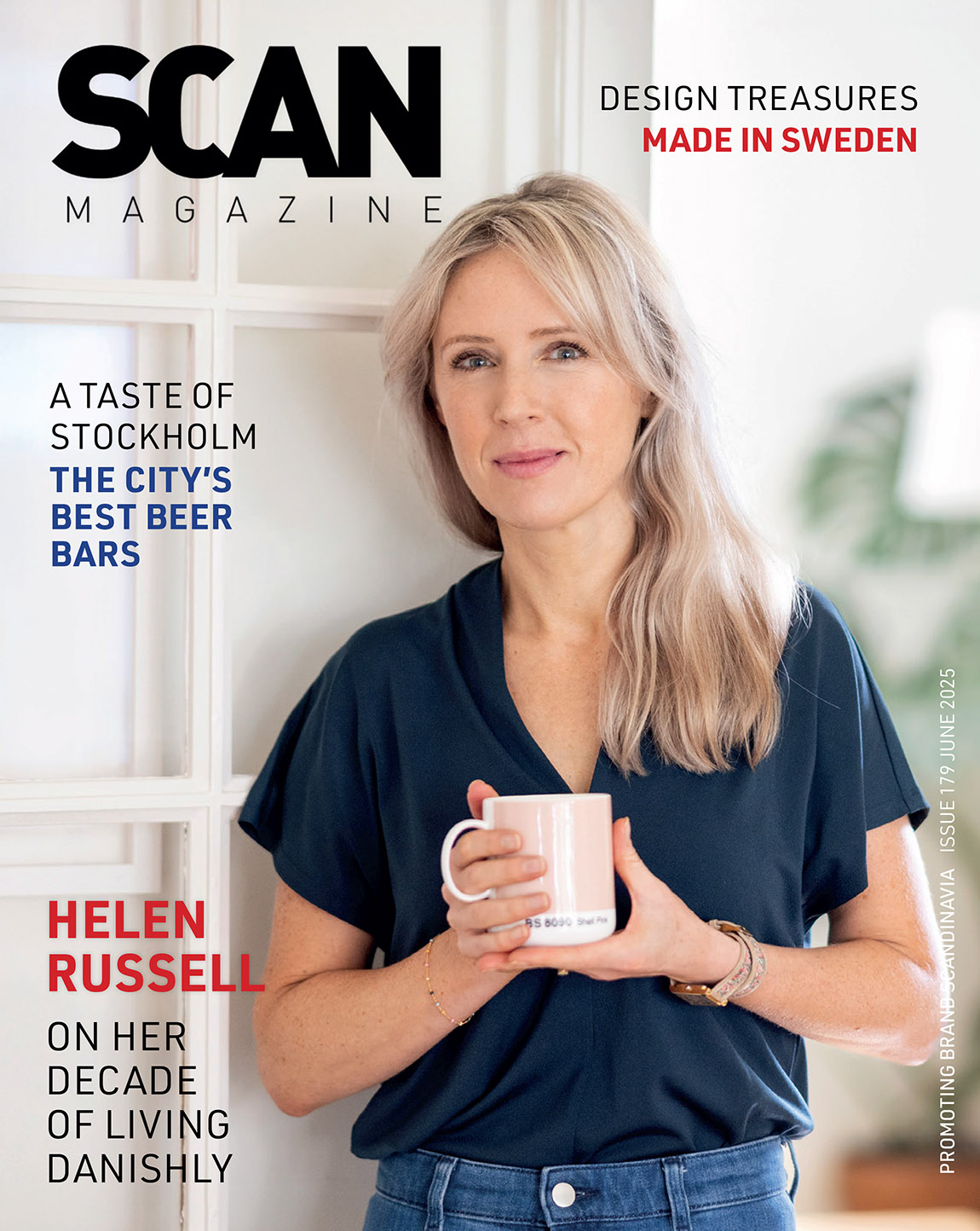Weekend in Oslo: Top Things to Do and Must-See Sights
Written by Alyssa Nilsen
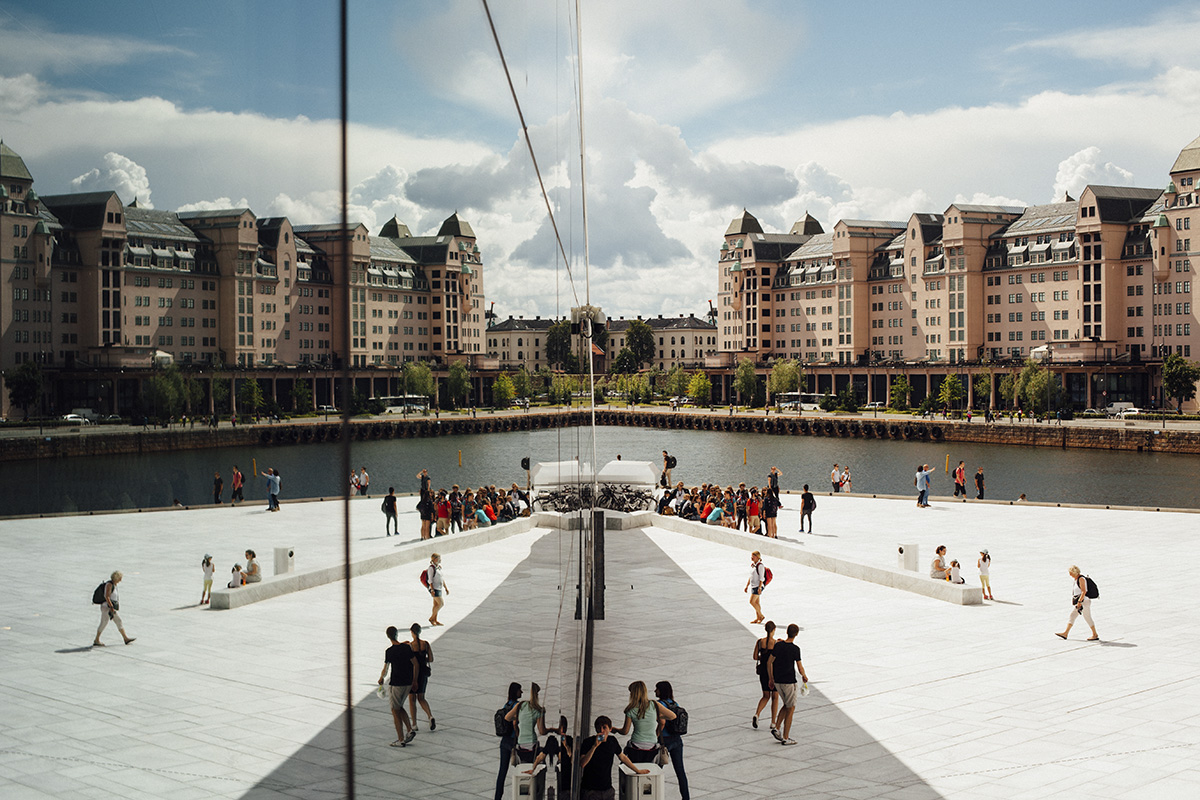
Oslo Opera House. Photo: Unsplash
With this online guide to a great weekend in Oslo, we invite you to discover Oslo. Visit the food halls that gather crowds across generations, tastes and traditions. Explore the art and parks that let people enjoy the city’s spaces for free, despite the infamously high prices elsewhere here. Enjoy the proximity of nature, providing city dwellers and tourists with fresh air and activity. Attend the festivals, markets and events that bring people together in the enjoyment of culture and experiences. Taste what has been dubbed among the best coffee in the world, while watching the world go by. Sip a frosty ‘utepils’ beer outside in the spring sun, or take a ferry out to one of the many islands in the Oslo archipelago.

Nordenga bridge in Oslo. Photo: Unsplash
Guide To Your Weekend In Oslo: Table Of Contents
Before you go for a weekend in Oslo
What to book for a weekend in Oslo?
A sauna with a view for your weekend in Oslo
Playful Saturday Nights in Oslo
Travel tips for a weekend in Oslo
Wining on your weekend in Oslo
Dining on your weekend in Oslo
Find out about a typical day in Oslo
Oslo must-see five sculpture parks
Artful architecture to explore on a weekend in Oslo
Festivities in Oslo (Festligheter) – Celebrate 17 May!
Before you go for a weekend in Oslo
Oslo is a city that requires entirely different planning and packing depending on what time of the year you choose to visit and what you wish to experience. You can opt for an urban, big-city experience with shopping, museums and food, a weekend in Oslo of nature and the outdoors, or a relaxing time in saunas and coffee shops. Each choice calls for different planning, and hopefully, this guide will leave you a little bit wiser as to what to bring and what to expect.
In short, all year long. Norway is a long country with several different climates. The western parts are cooler and wetter than the east, and the north is colder than the south. Oslo, despite being located by a fjord, is sheltered from the wild and wet coastal climate of the west due to the large mountain chains in the middle of the country. The summers tend to be warm and dry, with the odd heatwave or cool spell and occasional rain showers. The winters are cold and dark, but its location by the fjord leaves Oslo with a milder climate than further north or in inland towns and cities. Still, the temperate can plummet to -10°C and snow is not uncommon. Spring tends to be sunny and mild, whereas autumn brings a bit of everything, meaning it’s not at all uncommon to have sun, rain and snow in the same day. But Norwegians are used to the vastly different seasons, and there is no such thing as downtime. Winter brings skiing, winter sports and Christmas markets; summer brings festivals, hiking and beach life. Spring has celebrations and sunsoaking activities, and autumn brings indoor cosiness.
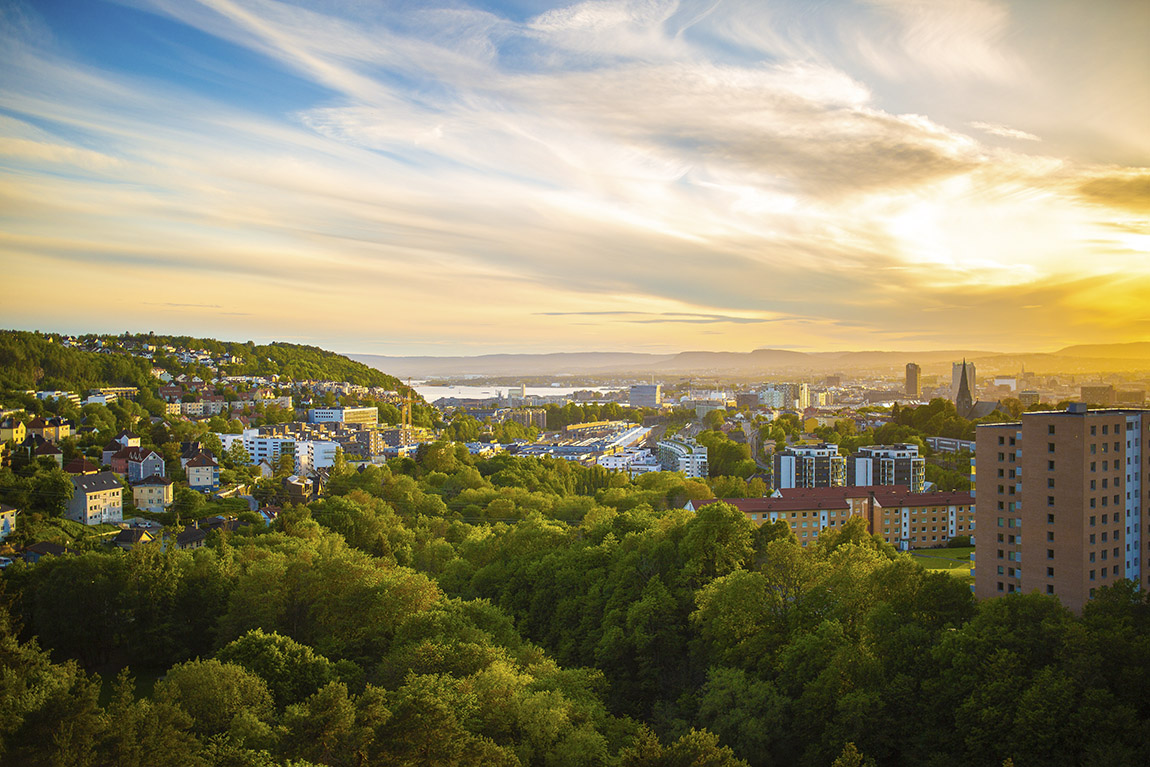
Aerial view of Oslo. Photo: Unsplash
As Norwegians say, ‘Det finnes ikke dårlig vær, bare dårlige klær’ (‘There’s no such thing as bad weather, only bad clothing’), so if a trip in the wintertime is on the cards, pack layers, woollen clothes and good boots, and you’re good to go. Make sure your boots have proper soles that will grip onto snow and ice, rather than patternless ones that will make them as slippery as ice skates. For summer trips, it’s still advised to bring layers as the nights, though bright, can get quite cool, but also pack sun cream, swimwear and sunglasses. The summers can get hot, and the sun doesn’t set until late in the evening. Norwegians are fond of comfortable clothes and footwear, so focusing on comfort and quality won’t make you stand out among the locals. A weekend in Oslo is relatively safe, but as is always the case in a city with lots of people in the same place, it might be a good idea to bring a backpack or handbag with zippers, to make sure you leave with the same amount of belongings you arrived with.
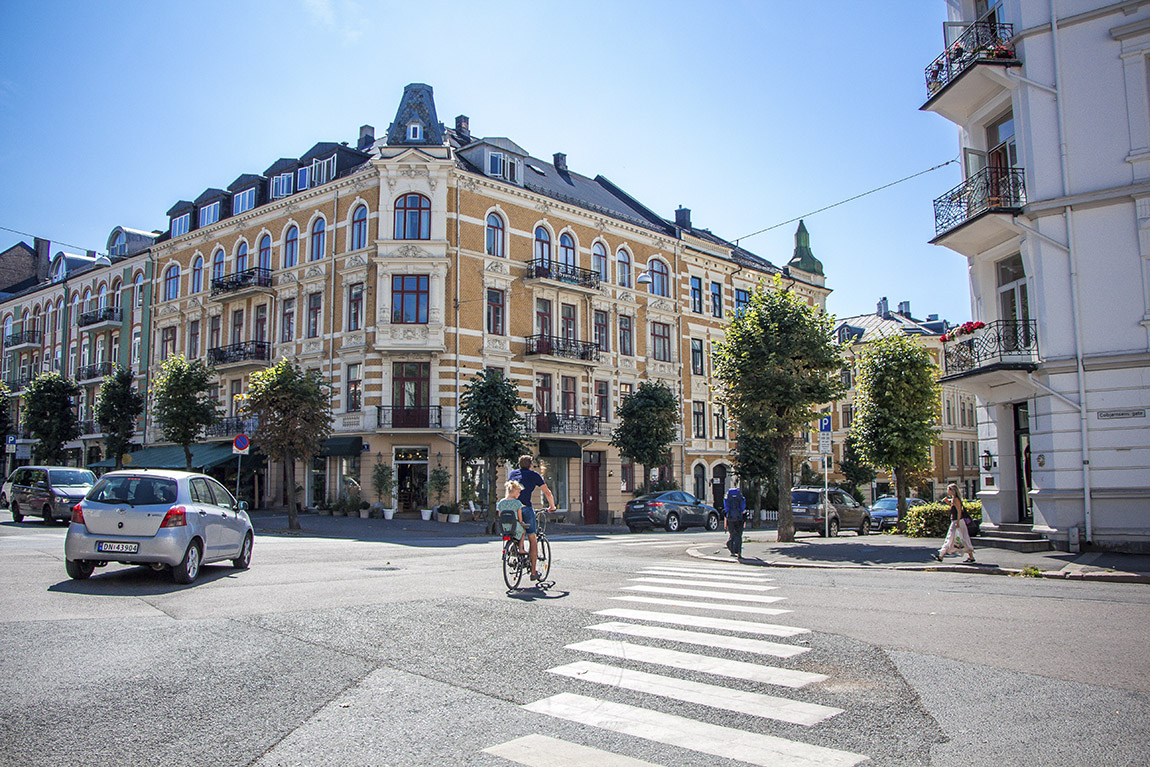
Cycling in Oslo. Photo: Unsplash
What to book for a weekend in Oslo?
Oslo does have a reputation for being an expensive city, but public transport is quite cheap compared to many other capitals, and with extra offers in place for tourists to get as much out of their money as possible. Ordinary tickets can be bought at ticket machines and in kiosks all over the city, but for good deals on transport and experiences, buy an Oslo Pass lasting 24, 48 or 72 hours. The pass includes travel on all public transport across the city as well as suburbs and districts (Oslo as well as Lillestrøm, Nittedal, Asker, Ski, Nesodden and Drøbak), and includes free access to several museums and attractions, as well as discounted restaurants, sightseeing and activities. The Oslo pass is available online below.
If you’ve got your eyes on a specific restaurant, particularly those with Michelin-stars, booking in advance is a good idea, even though Norwegians tend to eat an early dinner, usually straight after work, around 5 to 6pm. For guided tours at the Royal Palace, booking in advance might also come in handy, and most restaurants, experiences and tours are available for booking online. Big sporting events tend to sell out, so keep an eye on when tickets go on sale to make sure to get the ones you want.
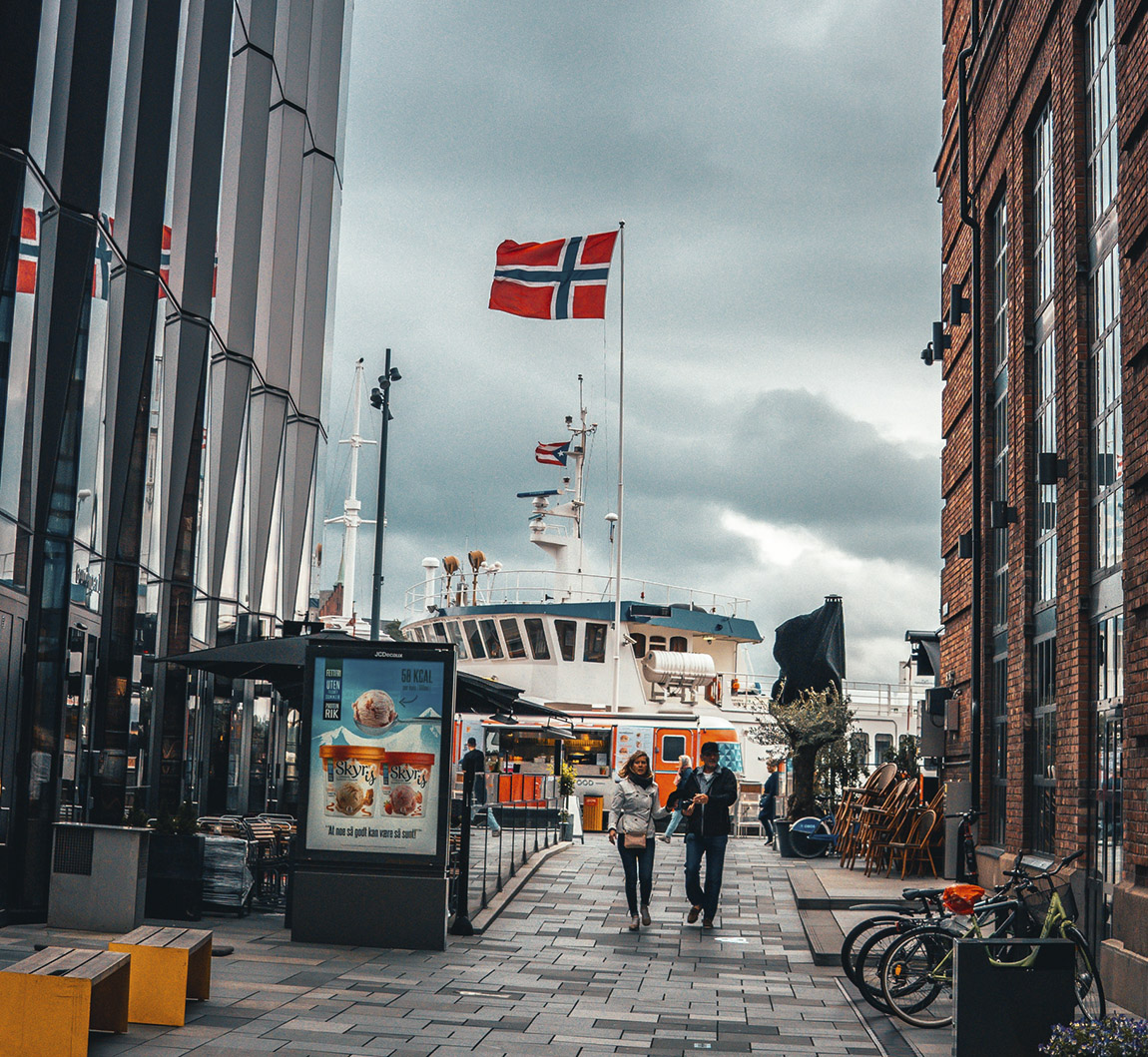
Ferry in Oslo. Photo: Unsplash
Where to stay for a weekend in Oslo?
Oslo has hotels for every price category and every need. If you want to splash out for luxury and fjord views, book a room at award-winning design boutique hotel The Thief, located at Tjuvholmen, offering built-in sound systems, themed suites, a spa, and restaurant/bar. Prices start at 2,960 NOK. At the other end of the scale, there’s City-box, located 250 metres from Oslo Central Station, with simple comfort and prices starting at 650 NOK. Or why not opt for Airbnb to see how the locals live? The quality of housing is generally high, and many locals will offer their guests advice on what to see, where to go, and how to get there.
How to get there?
Oslo has Norway’s biggest international airport, OSL Gardermoen, making it an easy city to fly into from all over the world. Norwegian Air, RyanAir, SAS and British Airways are among the airlines offering direct flights from the UK to Oslo. From the airport, there are local and regional Vy-trains, taking you straight into central Oslo in 23 minutes, as well as the slightly quicker but also more expensive airport express train, Flytoget. There are also airport buses, with stops in central Oslo as well as the suburbs.
There is also a smaller airport further south along the coast, Torp Sandefjord Lufthavn, offering flights to London and Manchester, albeit with a slightly longer journey into Oslo.
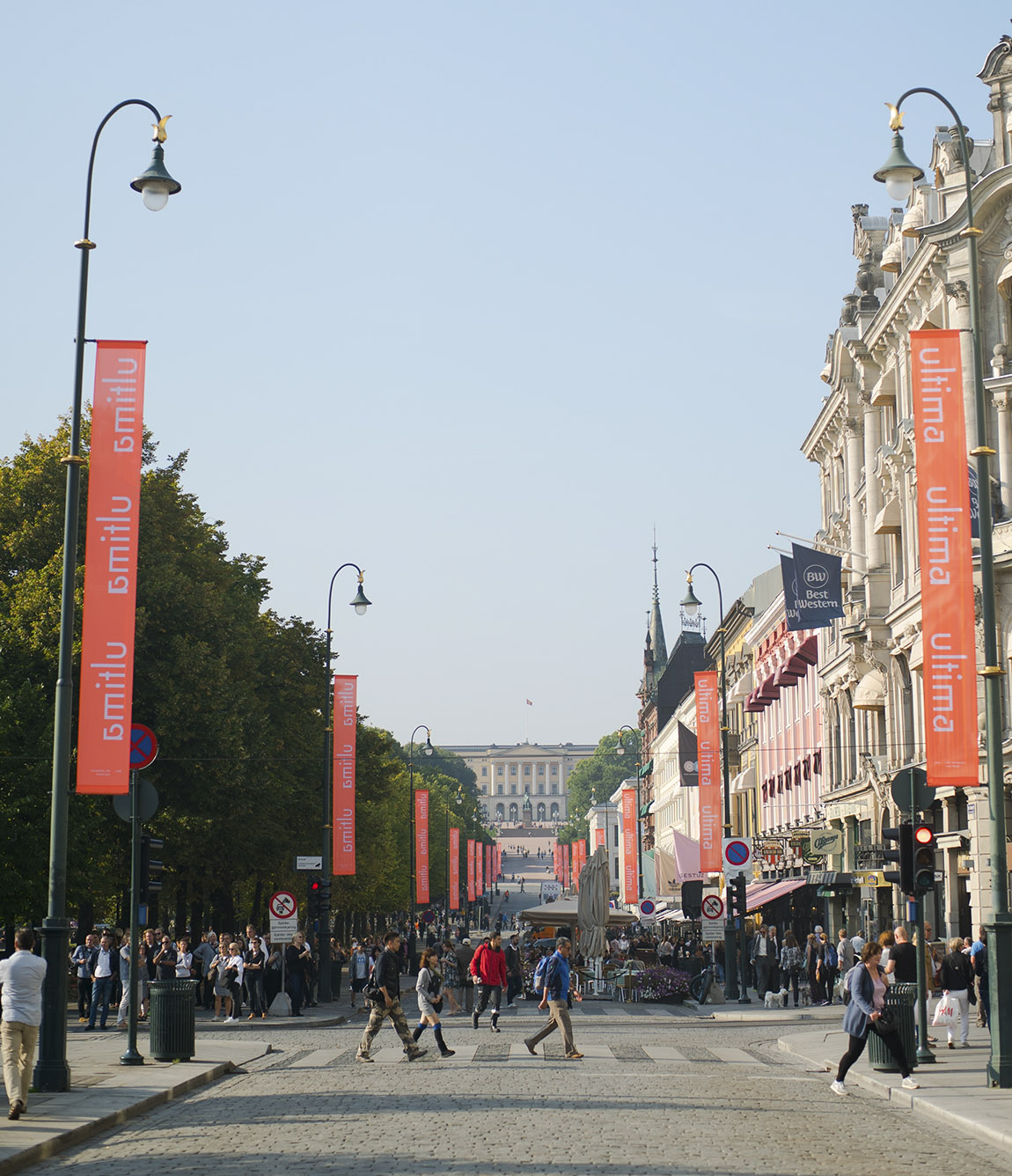
Summer in Oslo. Photo: Unsplash
Discover Oslo by foot
Once checked into your hotel, it’s time to head outside and start enjoying the multitude of things Oslo has to offer, to make the most of your weekend in Oslo.
Oslo Central Station
Start your day at Oslo Central Station, a location easy to get to and use as a starting point whether you’re staying nearby or travel by public transport. Buy a takeaway coffee and a cinnamon roll at Østbanehallen, the food hall located at Oslo Central Station. Once you step outside, you’ll immediately see the Opera House and the fjord to your left, but the station also marks the start of Karl Johans gate, the long, and mostly pedestrian, street ending up at the Royal Palace. Step out onto the lively square and follow the stream of locals and tourists and take in the sights and sounds. Not only has Karl Johan got a multitude of shops and restaurants to browse through, but along the way, you will also find some of Oslo’s most important as well as most beautiful buildings.
All metro lines, train lines and most tram and bus lines go through Oslo Central Station, but due to renovations in the area, the stops and tram/bus lines tend to change every now and then, so keep an eye on websites and travel planners for current stops and routes on your weekend in Oslo.
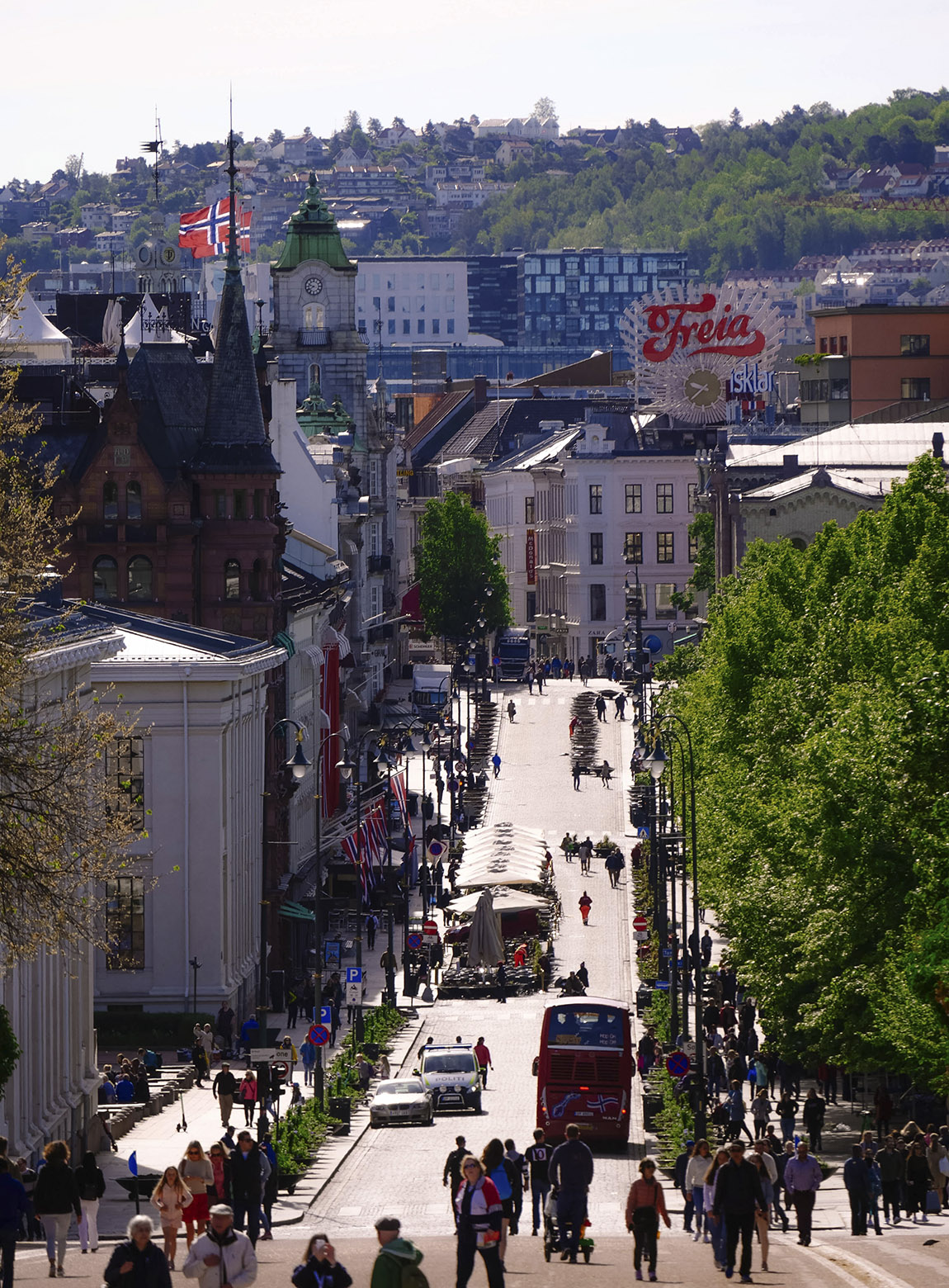
The area around Oslo Central Station. Photo: Unsplash
Walk past the beautiful parliament with its lion guards – Stortingsbygningen
The Norwegian parliament building is a massive H-shaped building with a distinctive semi-circle main hall. The building was designed by Swedish architect Emil Victor Langlet and was finished in 1866. The two huge stone lions guarding the building and its driveway have earned the area the nickname Løvebakken (The Lion Hill).
All metro lines go through Stortinget T.
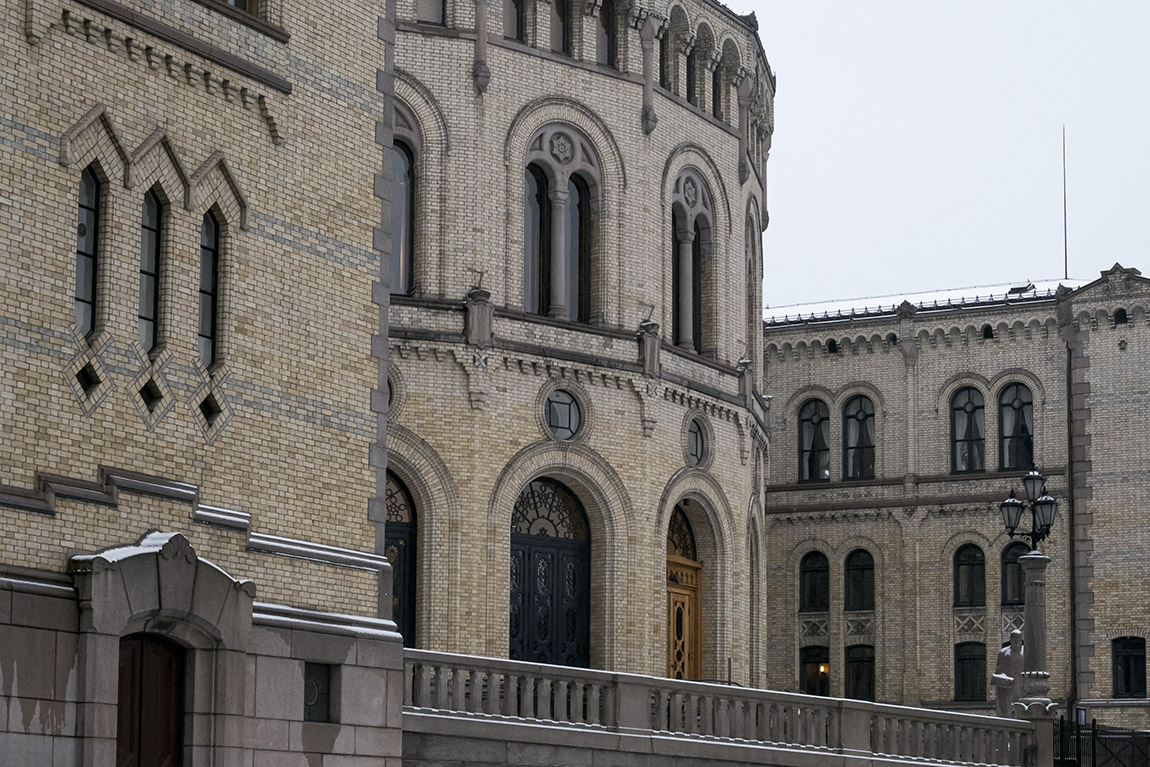
The Norwegian parliament building. Photo: Unsplash
A break by the water – Spikersuppa
The park stretching out from the parliament, colloquially known as Spikersuppa, hosts the city’s biggest Christmas market in the winter, complete with an ice-skating rink, and in the summer, it has water features and plenty of spaces to sit down for a rest in the shade. The park is located along one of the few stretches of Karl Johan with traffic during the winter months, but in the summer, the street is closed off and cars are replaced by flowers and trees, and restaurants and cafés move their tables out onto the street for people to enjoy their food in the sun.
Spikersuppa is located between Stortinget T and Nationaltheatret T, both serving all metro lines.
Get a glimpse of Norwegian cultural history at the National Theatre – Nationaltheatret
Across the park from the Parliament is the equally impressive Nationaltheatret (the National Theatre), which has its own metro station, Nationaltheatret T. Unchanged since it opened in 1899, the facade in yellow brick with granite details was built in a mix between Neo-classicist and Neo-Renaissance style. Often considered Henrik Ibsen’s theatre, Nationaltheatret has staged Ibsen’s plays almost every year since its inauguration and is also host to the biennial International Ibsen Festival.
Nationaltheatret is served by all metro lines at Nationaltheatret T, tram # 13 and 19 at Nationaltheateret tram stop, bus # 54, 31, 30, 81 and 32 at Nationaltheatret bus stop, and several local and regional trains, as well as the airport express train at Nationaltheatret train station (connected to the metro station).
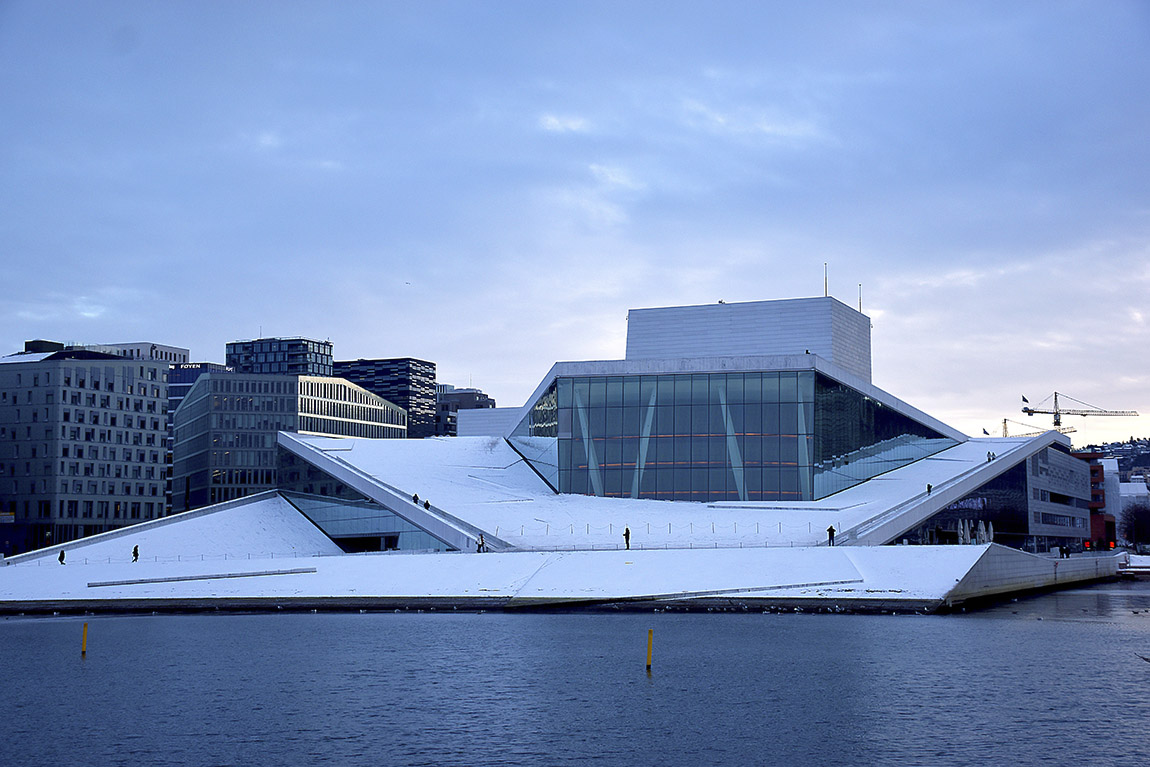
Nationaltheatret. Photo: Unsplash
Visit the old fortress with its centuries of history – Akershus Festning
When walking down to the fjord from the City Hall, turn left and head to the fortress on your left. Akershus Castle and Fortress is a perfect place for a stroll on the historic grounds, with pavements built for horses to make strolling that bit easier. Bring a book and sit down on the wall facing the fjord, with a smoothie or coffee to go, while watching the cruise ships and sailboats float by below you. Originally built around 1299, the fortress was later rebuilt as a Renaissance royal castle with a surrounding bastion. Over the centuries, a besiege has been attempted several times, mainly by Swedish forces. Since the late 1800s, it has mainly been used by the military, though at one point it was also used as a prison. While still a military area, the fortress is open to the public daily, and guided tours are available in the summer.
Tram #12 and buses 30, 31, 32, 81, 54 and 70 stop near Akershus Festning.
Stroll to the Royal Palace and through the gardens on your weekend in Oslo
Nationaltheatret T and Paleet Shopping Centre across the street mark the end of Karl Johan, but keep walking in the same direction, as up the hill you’ll find the Royal Palace, surrounded by the palace gardens. The palace, finished in 1849, was built in the Neo-classicist style and designed by Danish-born architect Hans Ditlev Franciscus Linstow. The palace is the official residence of the current Norwegian monarch, but unlike Buckingham Palace and similar royal residences across Europe, the Norwegian Royal Palace has no fences and gates. Instead, the entrance faces a large square, which is open to the public. Guided tours of the palace take place in the summer months, and the Royal Family gathers on the front balcony every 17 May (Norway’s National Day) to greet the public and children’s parade. The surrounding palace park is open 24/7 and contains art features, ponds and pathways leading to other parts of the city. It’s popular amongst locals who go there to sunbathe, have picnics, study or exercise.
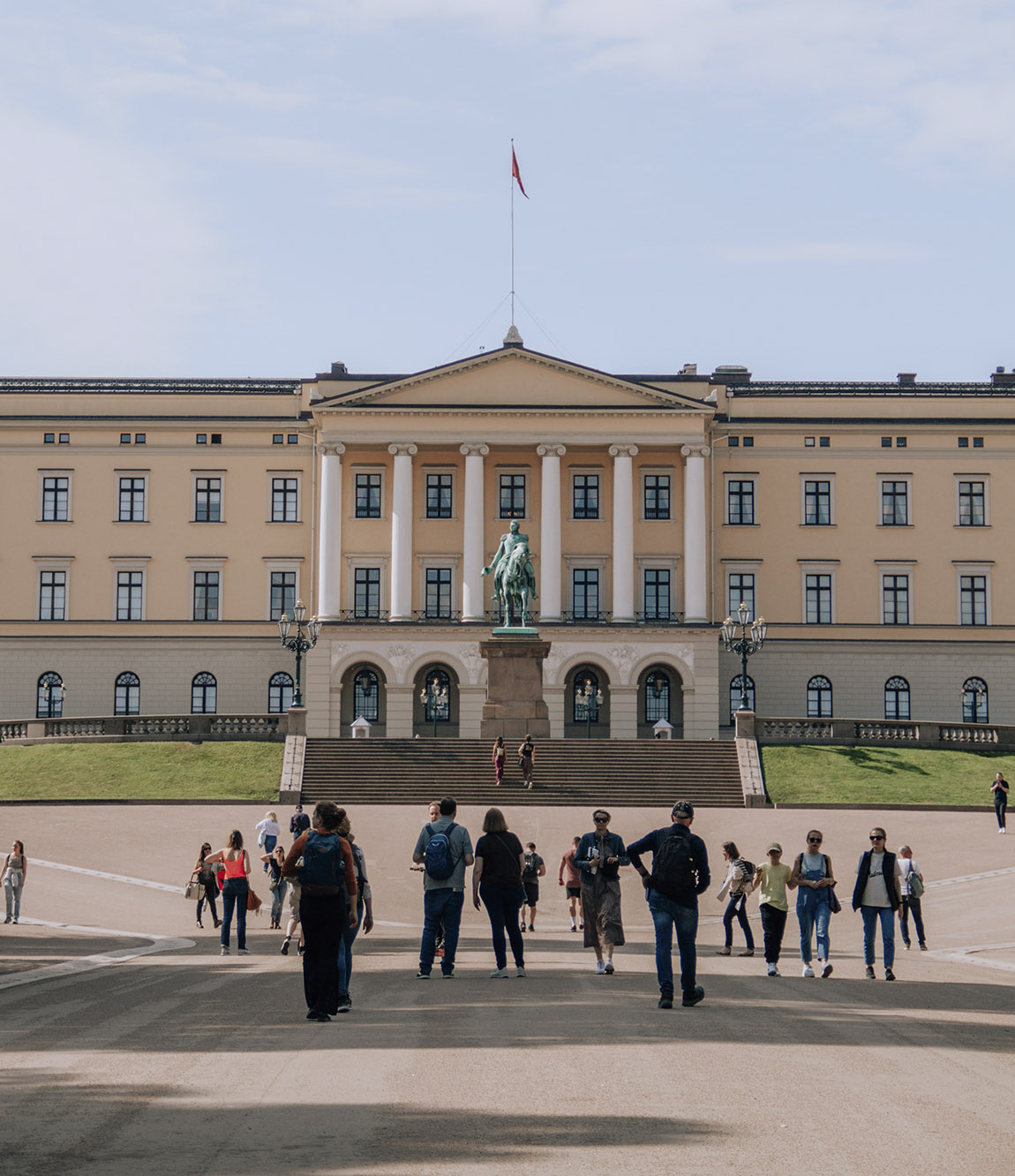
The Royal Palace. Photo: Unsplash
Oslo City Hall
From the palace, you can either walk up to Bogstadveien, one of the more prominent shopping streets in Oslo, ending up at Majorstuen near the famous sculpture park Vigelandsparken, or walk back down towards Nationaltheatret and then turn right towards the Aker Brygge wharf. On the way, you’ll pass Oslo Rådhus (Oslo City Hall) with its red-brick facade and characteristic towers. This is the venue of the Nobel Peace Prize, which is awarded annually, and if you pass by on the hour, you might be treated to a performance by its glockenspiel, playing surprisingly varied songs, ranging from David Bowie and Motörhead to Edvard Grieg. The steps facing the fjord are popular among young people who go skateboarding amongst the statues and columns. At Rådhusplassen Square, you might stumble across a giant outdoor concert, a street festival or a sports event. The majority of events here are free of charge, but watch out for the trams cutting straight through the square – they’re quiet, and fast.
Tram # 12 stops at Oslo Rådhus.
Walk along the harbour – Aker Brygge
Walk along the harbour of Aker Brygge towards Tjuvholmen while taking in the views of the fjord and the Akershus fortress, the ferries bringing people to and from the islands, and the beautiful archipelago. Sit down on the wooden steps leading down to the water and enjoy a cone of ice cream and a coffee in the sun before checking out the nearby galleries and museums. But don’t feed the seagulls; they might not leave you alone afterwards. Aker Brygge also boasts a high-end shopping centre, with shops, galleries and restaurants.
Tram # 12 stops at Aker Brygge.
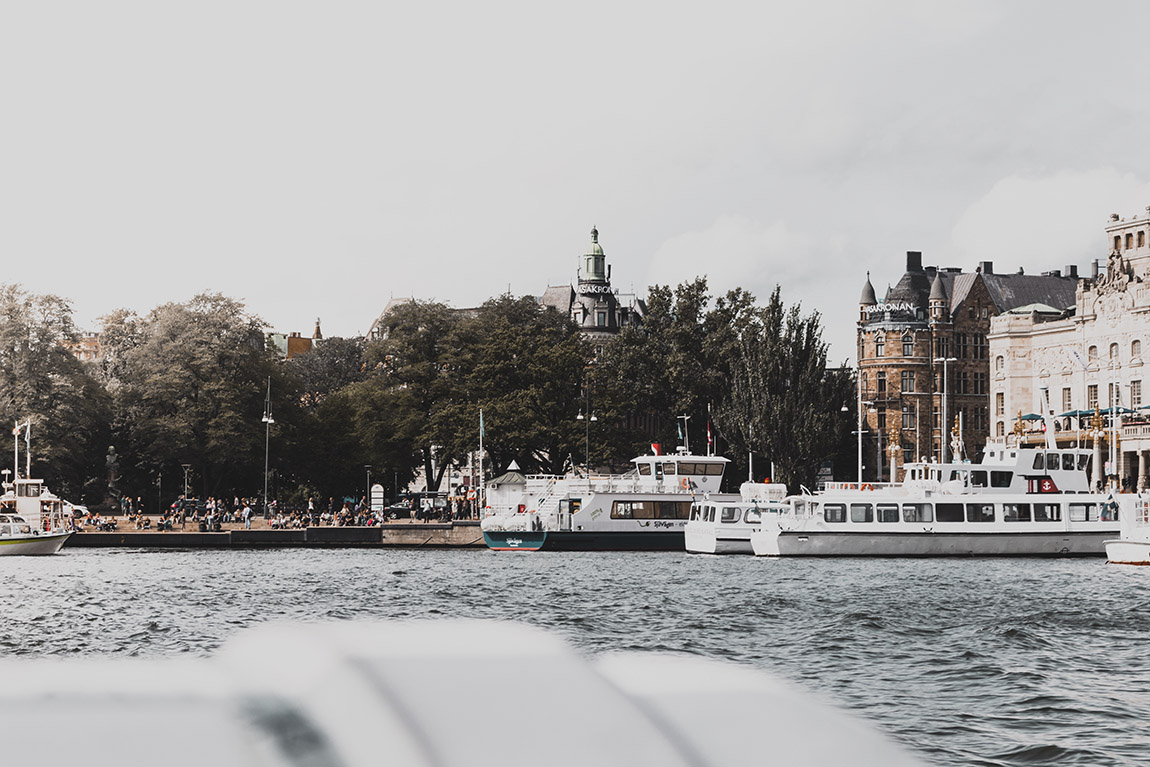
Aker Brygge. Photo: Unsplash
The biggest art museum in the Nordics – National Museum, Oslo
In 2021, the biggest art museum in the Nordics, the new National Museum, will open in the area and feature both older and contemporary art, architecture and design. The building is currently under construction, and though it’s currently looking more like a giant concrete box, completely dwarfing the tiny Nobel Peace Center located in front of it, the building will be lighting up the Oslo night once it’s completed.
Tram # 12 stops at Aker Brygge.
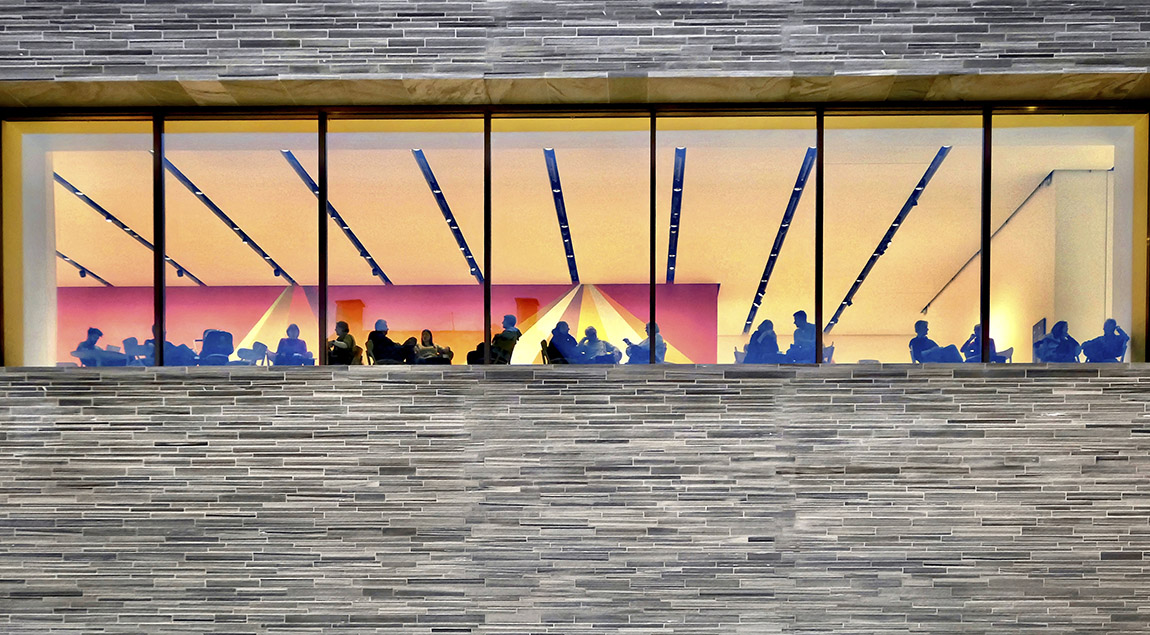
National Museum, Oslo. Photo: Unsplash
Continue along the docks – Tjuvholmen
Once you’ve got your strength back, continue along the docks to the newly redeveloped Tjuvholmen, where you’ll find futuristic and expensive buildings, quaint canals and a fjord walk lining the island. Overlooking it all is the impressive Astrup Fearnley Museet, a private museum of contemporary art. First opened in 1993, the museum moved to its current home, designed by architect Renzo Piano, in 2012. Varying parts of the Astrup Fearnley collection are always on display, with works from among others Damien Hirst and Jeff Koons as permanent pieces. There are also changing exhibitions by Norwegian and international contemporary artists. The museum grounds are another popular feature, with a sculpture park also designed by Piano, as well as a city beach open to the public.
Tram # 12 and buses # 54, 32 and 81 stop near Filipstad.
Explore a new urban neighbourhood – Filipstad
Continue your stroll along the fjord walk towards Filipstad and enjoy the canals, the architecture and art, or stop by one of the many high-end restaurants in the area. Filipstad boasts Skur 13, an indoor skate park where you can bring your own gear or hire a limited range of equipment for free. Filipstad is also the home of Oslotreet (the Oslo Tree), a 14-metre-tall tree complete with 125,000 LED lamps lighting up the Oslo night. The tree is on loan from Stein Erik Hagen to Oslo City, designed by Alexander Green, and previously displayed as the Tree of Ténéré at Nevada’s Burning Man festival.
Tram # 12 and buses # 54, 32 and 81 stop near Filipstad.
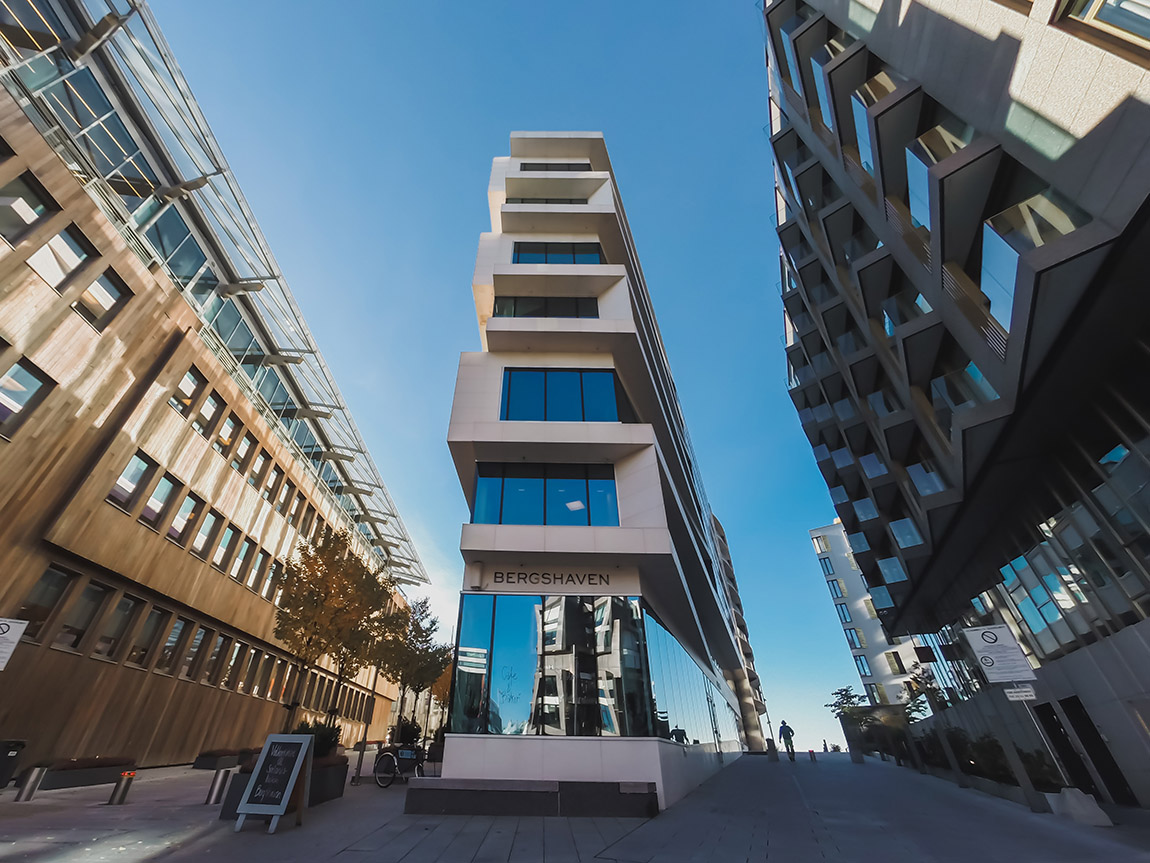
Tjuvholmen, Oslo.
A sauna with a view for your weekend in Oslo
After a long day of walking the streets and parks of Oslo, feet, muscles and eyes might be sore and tired and in need of a break. What better way to end the day than by relaxing in a hot and soothing sauna? Like everything else in Norway, however, a sauna is not just a sauna. In Oslo, you get saunas with a view. Unlike their neighbours in Finland, Norwegian saunas are not usually something you’ll find in people’s homes or with the same frequency. If private, they’re usually part of a family’s cabin in the mountains or other types of holiday homes, but most of them are public and found at sports facilities or hotels. In Oslo, however, the new craze is fjord saunas – saunas on, or by, the fjord.
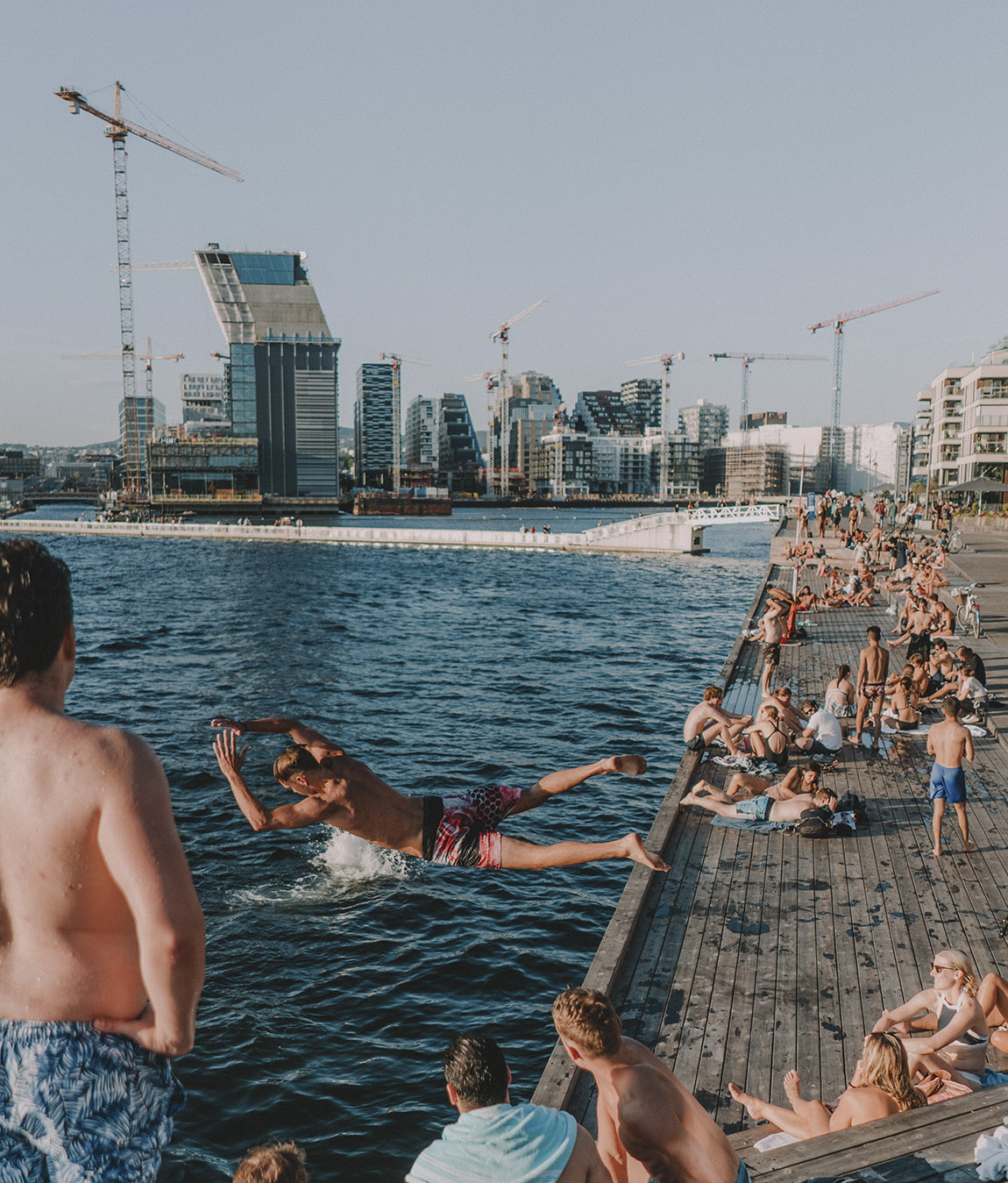
People swimming in Oslo. Photo: Unsplash
Sauna with a view, DJs and bar
SALT started out as a nomadic art project, travelling Norway with its spectacular pyramid constructions designed by Sami Rintala and Kyrre Kalseth as well as artist Joar Nango. Next to the buildings, The Arctic Pyramid is a 70-metre-long wooden structure inspired by traditional fish-racks, which is used for art and installations. Having started out in Svolvær in the north of Norway in 2010, SALT has travelled through Sandhornøy south of Bodø, Bergen, and in 2017 the complete project opened in Oslo, where its temporary stay has been extended to 2023.
Located at Langkaia with a view of the Oslo fjord and the Opera House, SALT has four saunas to choose between, including Árdna, which is one of the world’s biggest saunas, sitting 100 people. The structure has panoramic windows facing the fjord, making for stunning views whether mid-summer with bright summer nights or warm, comfy and sheltered from blizzards in the winter. Árdna keeps a temperature of 60-80°C (140– 176 Fahrenheit) and has its own bar and DJ on the weekends. The smaller saunas – Skroget, Himmelsauna and Naustet – are also available for private bookings. Naustet’s main space is a café selling traditional waffles with brown cheese and baked goods. For bigger meals, SALT’s outdoor space has food trucks in the summer season, serving the big outdoor seating area.
Outside, you’ll also find two cold water pools, one with freshwater and one with seawater, as well as showers. Some people also choose to cool off in the fjord after a session in the sauna, and ladders let you climb back up to the docks again.
In addition to offering saunas, art and food, SALT is an entertainment venue, with big national and international names playing concerts, and quizzes, panels and talks are also a regular part of SALT’s programme.
Dive straight from the sauna into the fjord at Oslo Fjord Sauna
If you don’t just want to look at the fjord while in a sauna, how about a sauna on rather than by the fjord? At Sørenga, you’ll find Oslo Fjord Sauna, a sauna club with a fleet of floating saunas. The original sauna, Måken (‘the seagull’), was built out of driftwood found by the Oslo fjord by sauna idealists, and has since been joined by Skarven (‘the cormorant’), and Anda (‘the duck’). The latter is the latest addition, a round structure built as an amphitheatre with a large window overlooking the fjord and archipelago.
There’s also a hot tub holding up to seven people. This requires a separate booking but is advised as an add-on to an existing booking with a sauna. The saunas operate with drop-in hours or can be booked privately in advance. Located right outside the Opera House, and equipped with ladders for easy climbing, the saunas are perfect for quick dips in the fjord to cool off on your weekend in Oslo.
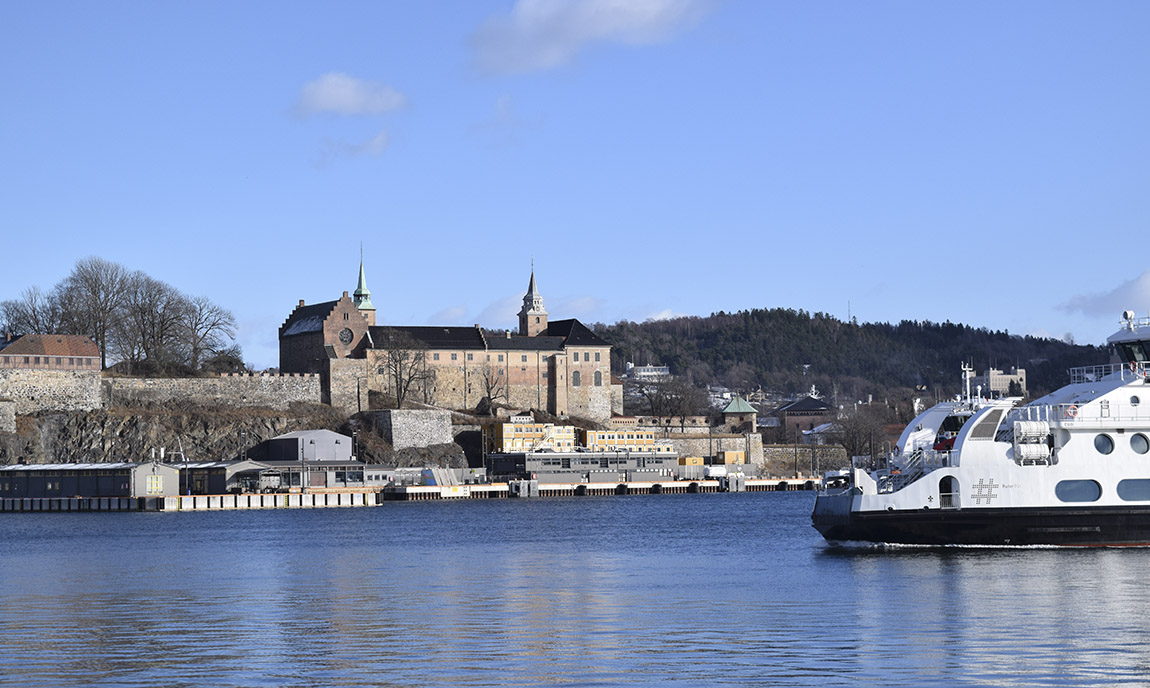
By the waterfront in Oslo. Photo: Unsplash
Combine a fjord cruise with a relaxing sauna for your weekend in Oslo
KOK also offers floating saunas, but in addition to floating near the harbour by the Opera House in Bjørvika, it offers fjord and sauna cruises. With three saunas named after the light-phenomena Morild, Vega and Aurora, KOK allows you to enjoy a trip around the inner Oslo archipelago in the comfort of a sauna, with the added opportunity of a cooling dip in the fjord. The boats run on solar power, leaving no engine noise to disturb your peace as you enjoy the view from the sauna.
There are two- and three-hour cruises. The shorter Sauna Cruise allows single seat bookings, whereas the longer version, fjordcruise, is for group bookings only. The three-hour Fjordcruise is planned along with the captain and gives you greater freedom to visit a seaside restaurant along the way, should you want to.
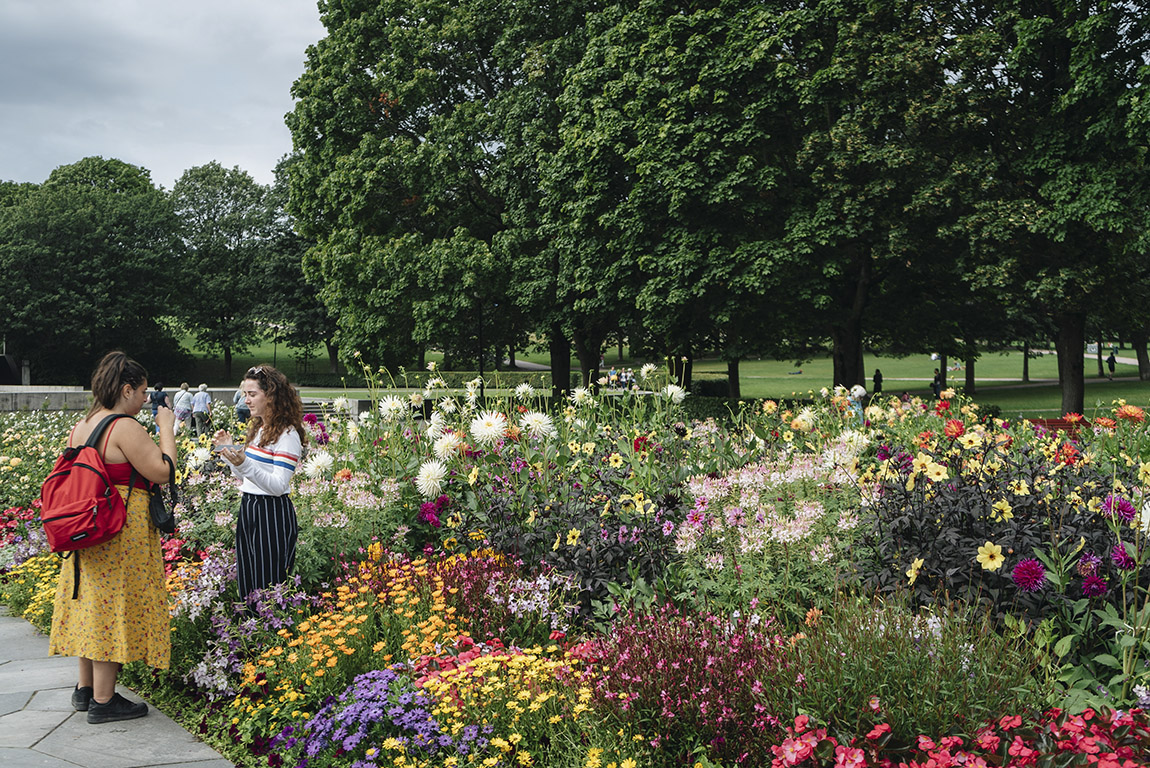
Vigelandsparken. Photo: Unsplash
City and nature side by side
One of the aspects of Oslo that the locals value the most is having nature in the immediate vicinity. Sunday hikes, skiing in the winter, beach life in the summer – Norwegians need no excuse to take a break from city life and step into the more rural areas surrounding the city. From Oslo city centre, you can use public transport to travel to nearby mountains, forests, islands, farms and ski slopes, all less than an hour away. If you’re travelling for a weekend in Oslo during the winter, you have a lot of chances to try your hand (or legs) at winter sports, whether you’re a professional or have never seen a pair of skis in your life. Legend has it that Norwegians are born with skis on their feet, but don’t let that discourage you; it doesn’t take much practice to get a whole lot of fun out of the various skiing options.
Ski like a Norwegian
The largest ski resort in Oslo is Oslo Vinterpark (Oslo Winter Park), located at Tryvann. The park is 40 minutes away from the city centre on metro #1, and offers slopes for alpine skiing, snowboarding and cross-country skiing for all levels, including beginners. There are also terrain parks with elements like jumps, rails and a halfpipe for even more fun. Equipment for alpine skiing, cross-country skiing and snowboarding can be rented at the park, including clothes. The park also offers lessons through its ski school, where all instructors are certified.
The park is open from December through to late April. Get metro #1 to Voksenkollen station, and walk the remaining 15 minutes or get a corresponding Ruter-bus (located next to Voksenkollen Station) straight to the park entrance.
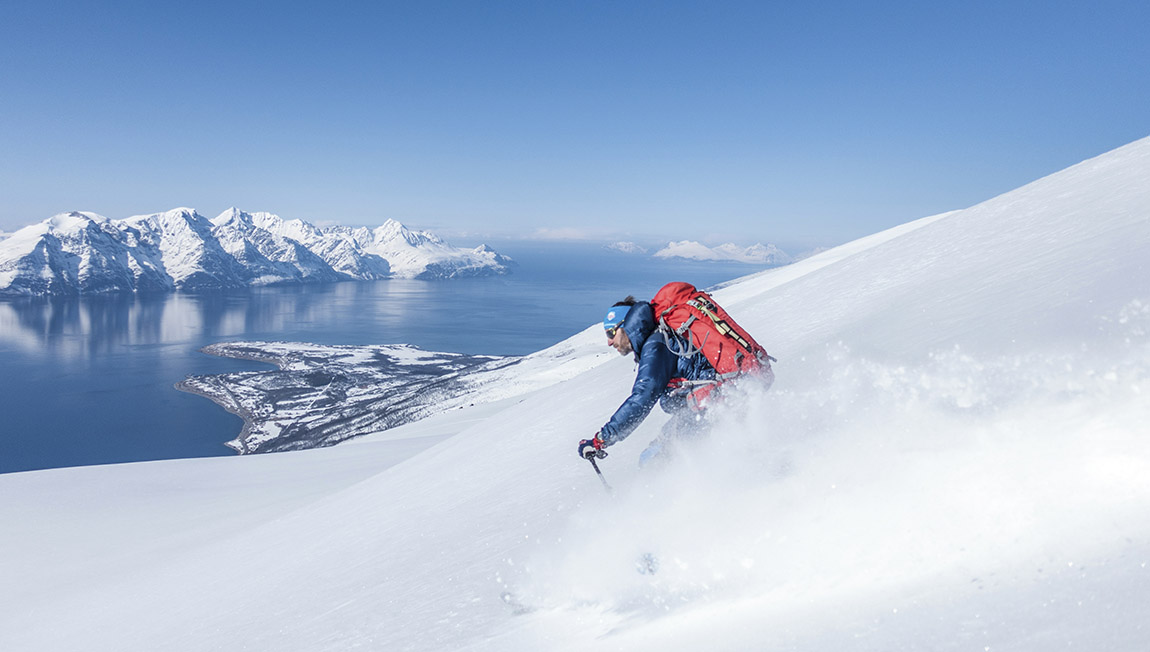
Man skiing down a mountain in Norway. Photo: Unsplash
Go tobogganing down Korketrekkeren
If you’re after a different kind of winter fun on your weekend in Oslo, how about going tobogganing? Get metro #1 all the way out to Frognerseteren station, where’ll you find the start of the biggest and most popular sledding run in Oslo, Korketrekkeren (The cork screw). Korketrekkeren is two kilometres long, and one trip down the whole run takes between eight and ten minutes. When you reach the end, you’ll find yourself at Midstuen metro station where, if you’re keen to go again, you can get the metro straight back up to Frognerseteren. Enjoying the slope is free of charge, and toboggans for hire are available from several outlets at Frognerseteren. The slope itself can get busy when the weather is nice, and adults outweigh kids both in size and numbers, so a lot of families visiting with small children prefer to play in the hill marking the beginning of the run. Also be aware that there are moose in the area, and people have been known to bump into them on the way down the run – quite literally. Stop for a break and a hot drink at the beautiful Kafé Seterstua and enjoy the view afterwards.
Korketrekkeren is only open for tobogganing if conditions are good enough, so keep an eye on akeforeningen.no for updates.
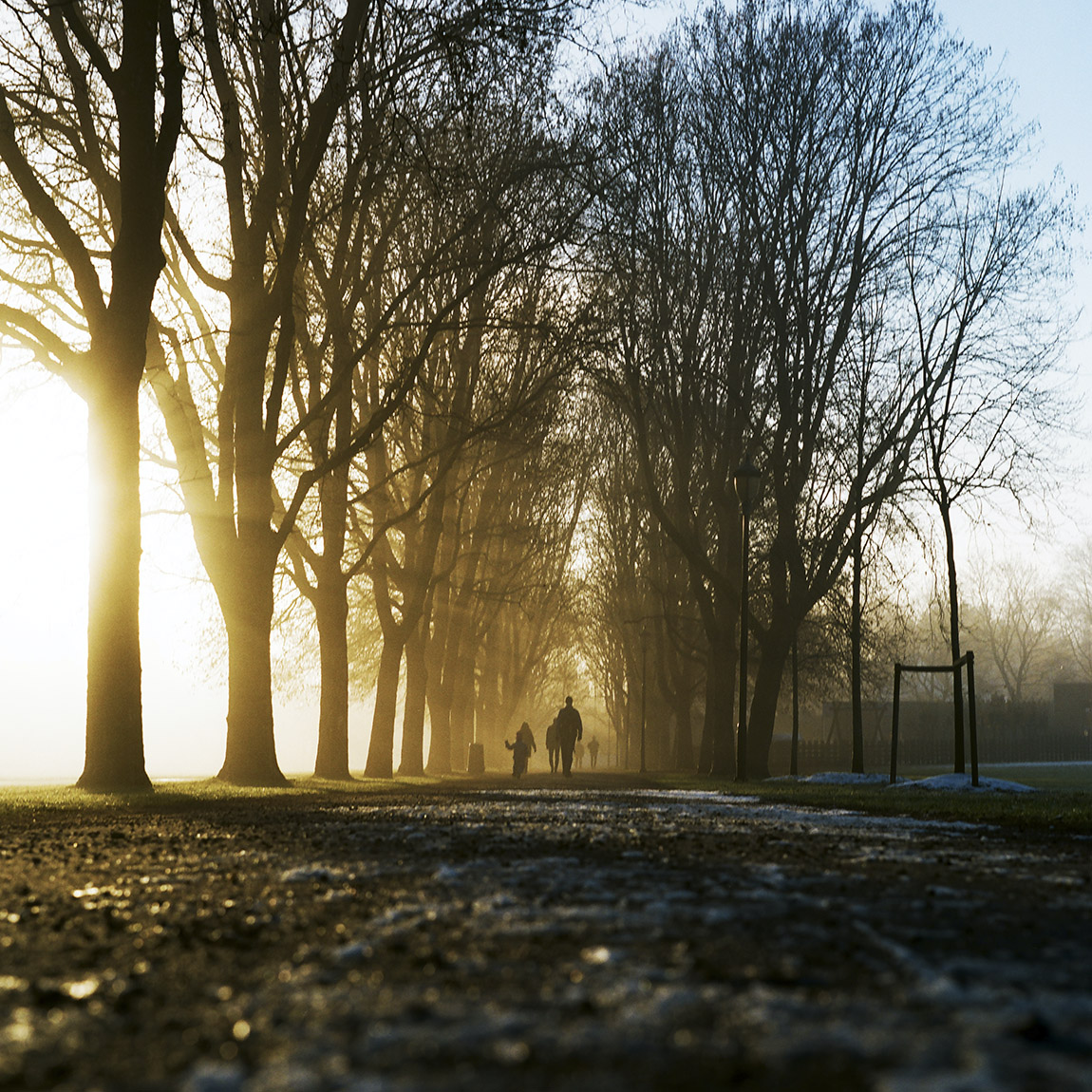
Vigelandsparken. Photo: Unsplash
By public transport straight into nature
You don’t have to go to an actual park to enjoy hiking, biking or cross-country skiing on your weekend in Oslo, though. Marka (the woodland), the forested hills surrounding the city centre, is a recreational haven for all Oslo citizens, where they go to unwind, exercise, spend time with their family, and breathe clean woodland air. It’s located all around the city, and immediately reachable by public transport whether you go east, west, or north.
Marked slopes and hikes are available everywhere, and there are several cabins serving food or offering overnight accommodation.
Visit the fjord by ferry
In the summer, getting a ferry out to the islands in the Oslo Archipelago on a weekend in Oslo is very popular amongst Oslo citizens as well as tourists. At City Hall Pier 4 at Aker Brygge, you’ll find passenger ferries as part of the Oslo public transport system (#Ruter), taking you to several of the nearby islands. Each of them offers a unique experience, like Hovedøya with its lovely beaches and medieval monastery ruins, and the three connected islands of Gressholmen, Heggholmen and Rambergøya with excellent beaches and swimming opportunities. There’s also Langøyene, one of the most popular destinations, which is closed for renovation throughout 2020. The distances are short between the islands, so island hopping is a good way to see them all. Facilities vary on the different islands, but some of the bigger ones have kiosks and toilets with irregular opening hours, so bring snacks and drinks, just to be safe. The ferries run all year, though they’re more frequent during the summer months.
All metro lines stop at Nationaltheatret T, the closest metro station; tram #12 stops at Aker Brygge; and all buses stopping at Nationaltheatret and Tjuvholmen are within walking distance.

Aker Brygge. Photo: Unsplash
Visit Holmenkollen on your weekend in Oslo
Winter sports, and skiing in particular, are Norwegians’ pride and joy. In addition to the downhill and cross-country kinds of skiing that most people can have a crack at, there’s the more daunting ski jumping sport, which differs a lot from the tiny jumps you can find in normal slopes for people to play on.
Ski jumping is a massive sport, where the athletes quite literally soar through the air wearing only skis, a jumping suit, a helmet and goggles for protection. Ski jump towers themselves are a work of architectural art, and if you want to see for yourself just how high up the athletes start their runs, head to Holmenkollen, Norway’s most famous jump tower.
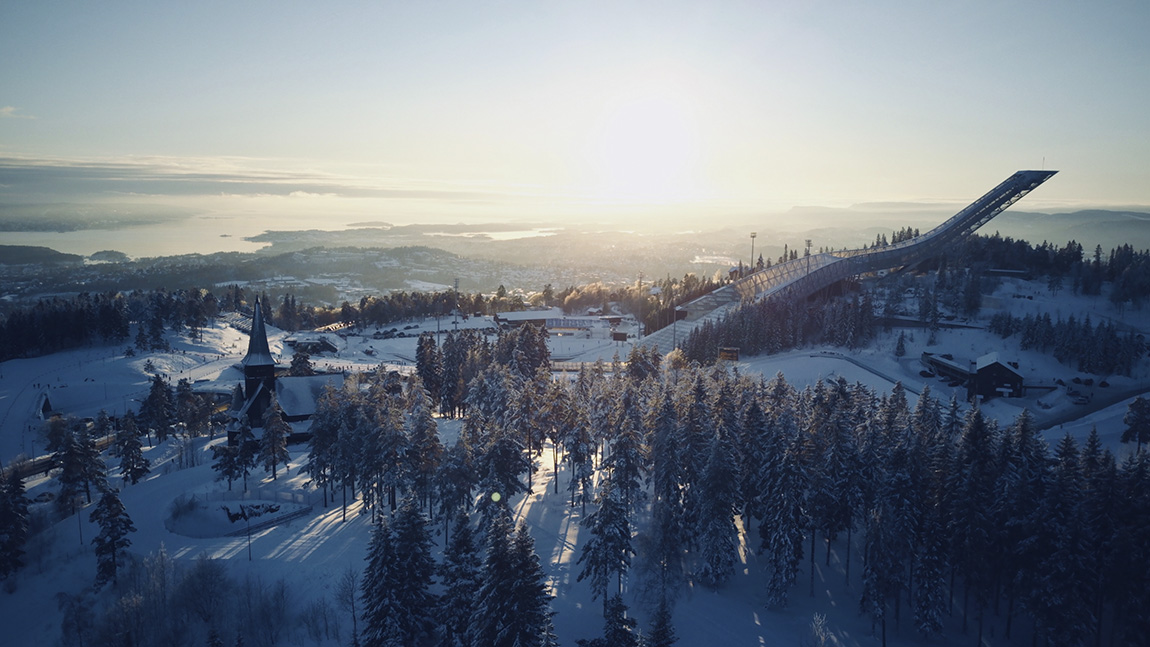
Holmenkollen. Photo: Unsplash
Holmenkollenski jump was first constructed in 1892 out of trees and branches, and the jumpers would reach between 15 and 21 metres. Since then, it has been rebuilt 19 times and been used for Olympic Games (in 1952) and multiple World Cups and championships, and today’s jump tower is one of the most iconic sports venues in Norway. It’s the only steel jump in the world, and the current record of the longest jump is 144 metres, set by Norwegian jumper Robert Johansson in 2019. Holmenkollen is also a venue for other winter sports, such as slalom, cross-country skiing and biathlon tournaments, and the roar of the Holmenkollen crowd is so legendary it’s got a name of its own, Kollenbrølet (‘the Kollen roar’).
The jump tower is open to the public every day, and if you’re feeling extra brave you can use a zipline to get from the top and straight back down to the bottom of the hill (open between March and October). The Holmenkollen museum is located at the foot of the jump tower, and there’s even a ski simulator for those who’d like a risk-free glimpse into what an actual jump feels like.
Metro #1 stops at Holmenkollen.
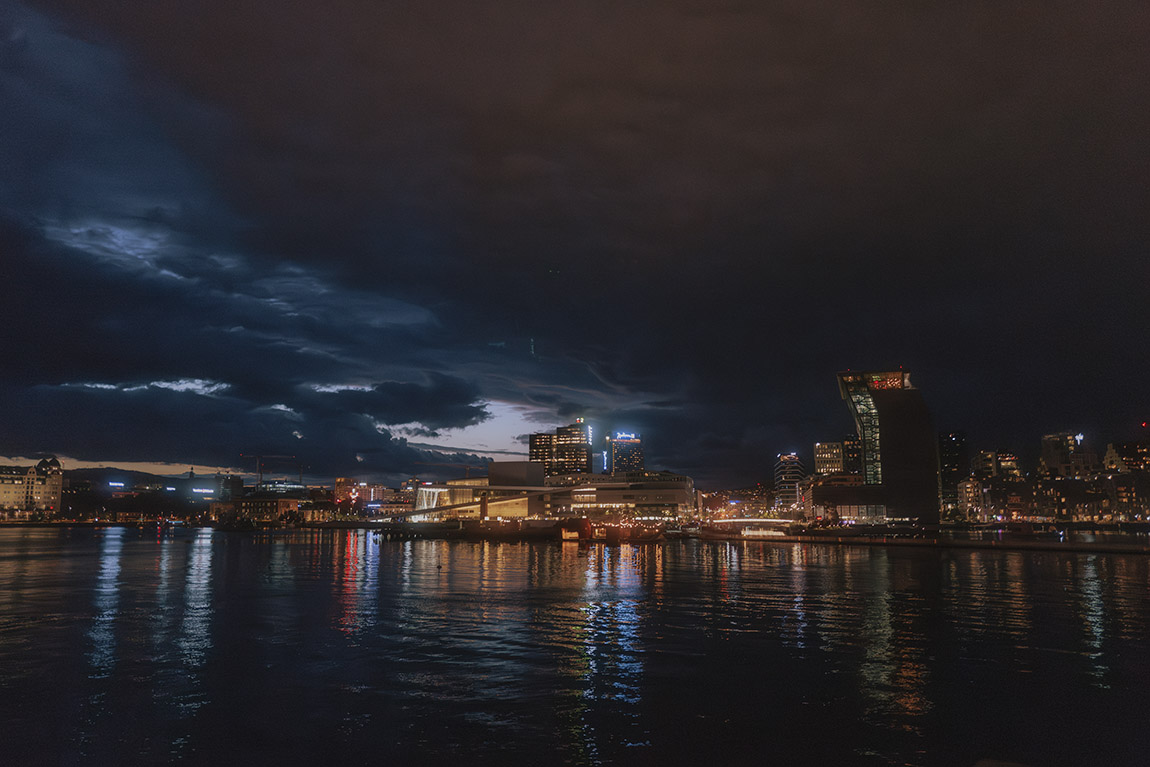
Oslo waterfront at night. Photo: Unsplash
Playful Saturday Nights in Oslo
Despite Norwegians’ reputation for being quiet, withdrawn, shy and reserved, there’s an undeniable playfulness to the descendants of the Vikings. Not only is this evident in their love of quirky cafés and foodhalls, their street art, and the way they celebrate their constitution day, but a Saturday night out on a weekend in Oslo is not how you might imagine it.
Whereas previous generations’ idea of a night out might have entailed sitting down at a bar to drink, or – if young, hip or tough enough – going to a disco or a club to dance, nowadays people go out to play. The current craze in Oslo, which is also slowly spreading to the rest of Norway, is themed bars and clubs, where you play games with friends and strangers. There’s the traditional 18-hole mini-golf course and bar at Oslo Camping near Youngstorget, albeit with certain twists: events, club nights and naked golf have been known to happen.
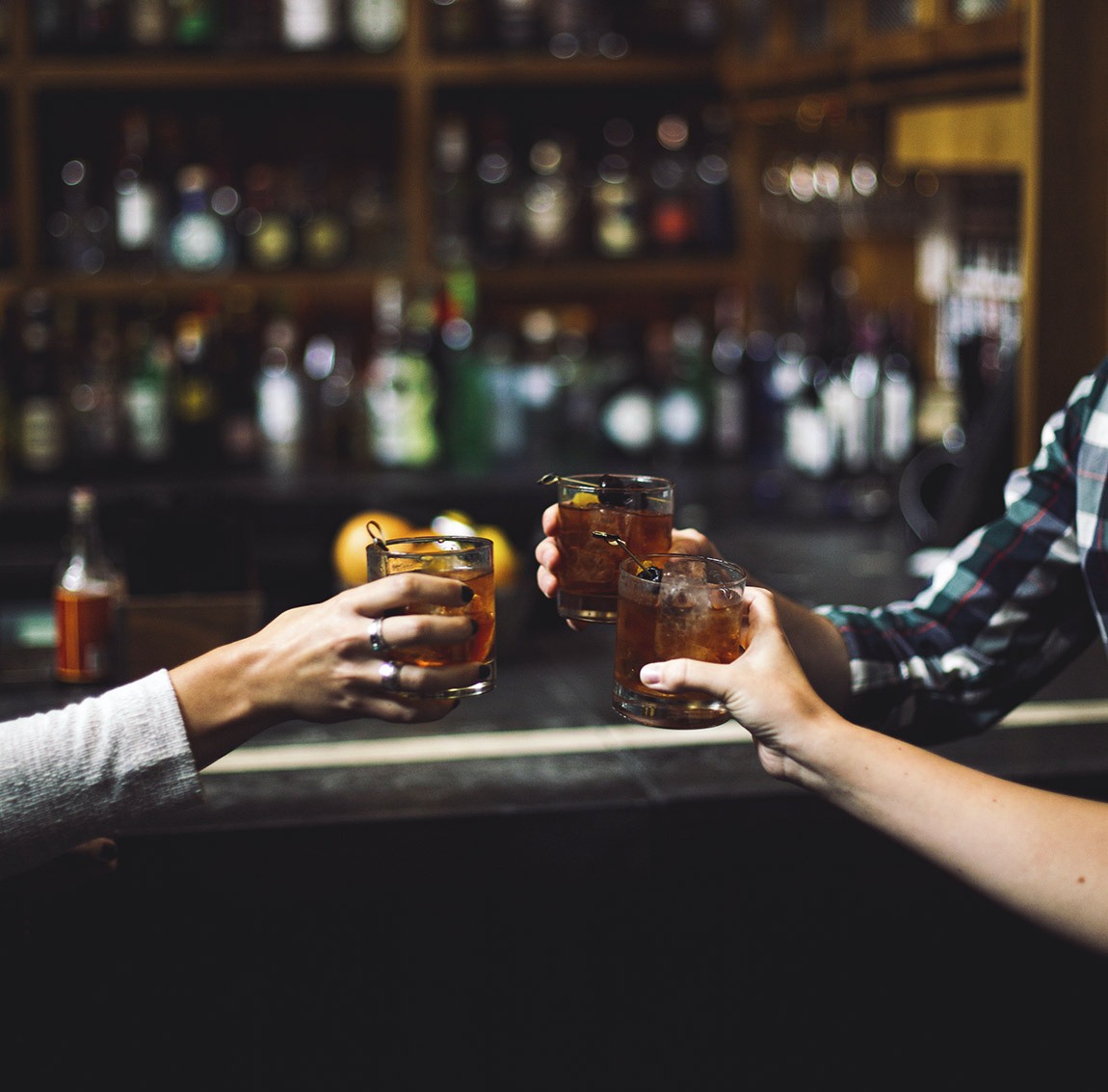
Having a drink in Oslo. Photo: Unsplash
The Youngstorget area is a haven for game bars. Tilt offers several levels of bars, traditional arcade games, pinball machines, shuffleboards, pool tables and table hockey. They’ve also got a large selection of micro-brewed and imported beers. If all the shuffleboards are occupied, you can also head to Røør, where they have 14 shuffleboards and 70 different types of beer on tap.
Brygg, in Storgata, offers table tennis, whereas for those who are secretly pop stars, Syng has two karaoke bars in central Oslo, both decorated like what you might imagine the insides of a unicorn’s brain to look like. There are themed drinks and cocktails, and private rooms for different-size crowds, meaning that even the shyest of guests should feel comfortable grabbing the microphone for a fun night of sing-songs. And if you want a little bit of extra flair, turn up the echo and press the dazzle button for a dazzling surpise.
If darts is more your thing, head to Oche in Torggata, where you can enjoy cocktails and other alcoholic drinks, free popcorn and the privacy of your own booth, while impressing your friends with your skills. If you prefer to sit down with a game of chess, The Good Knight is Norway’s first chess bar, catering to the chess-crazed nation that is Norway.
For those wanting a bit more noise and colours, Ball offers social retro video gaming for small and large groups of people. Tournaments and other events take place frequently, and for those who prefer watching other people play sports rather than playing it themselves, the place doubles up as a football pub in the early hours of the evening. With ten smaller screens and two big screens, it’s the perfect place for a night out, no matter how many friends you’re bringing along – or getting to know along the way! Also notice the interior – it’s all themed.
The latest offering on Oslo’s games bar scene is the enormous bar Raadhuset. The bar aims to be Oslo’s games mecca for adults who refuse to grow up. Located by Oslo City Hall, Raadhuset contains three bars, 60 games (including pool tables, shuffleboards, arcade games, darts and more) and two karaoke rooms. They also serve Mexican street food out of their own kitchen, so you can renew your energy after a long evening of games and fun.
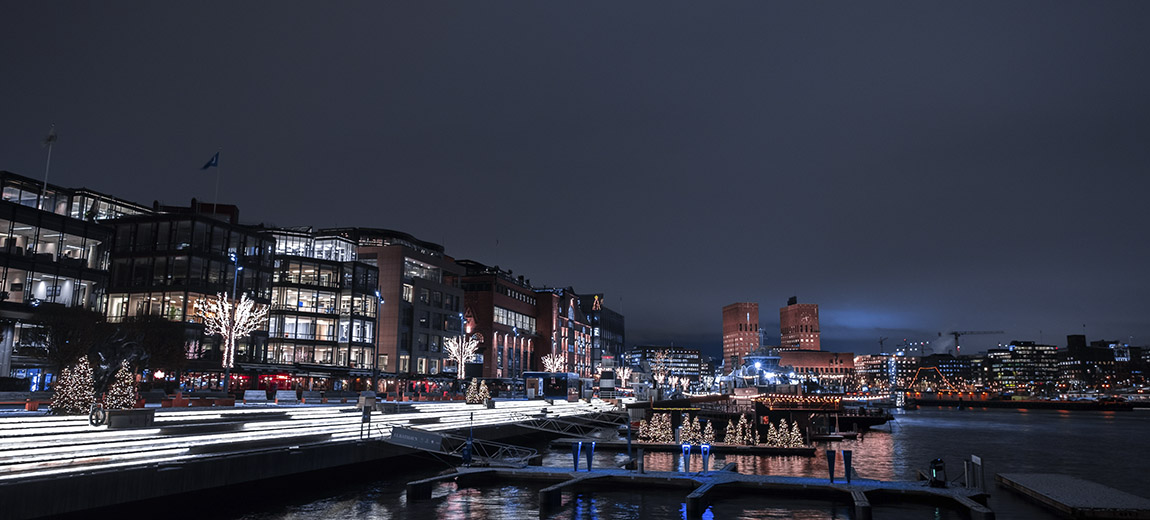
Oslo at night in winter. Photo: Unsplash
Sunday stroll in Oslo
Every Sunday on a weekend in Oslo, Norwegians leave the comfort of home to take part in one common activity: walking. A lot of the time nature, such as the woods, Marka or a mountain is the goal, but for the hip and urban Oslo crowd, a Sunday walk is often enjoyed right in the middle of the city. The river of Akerselva runs straight through the city, and though it’s not technically the centre point of Oslo, it’s still considered the boundary between east and west. Walking along the river and its surrounding neighbourhoods is such a popular activity it’s even got its own annual festival, Elvelangs, when light and art installations, music, theatre, acrobatics and other creative expressions take place all along the river.
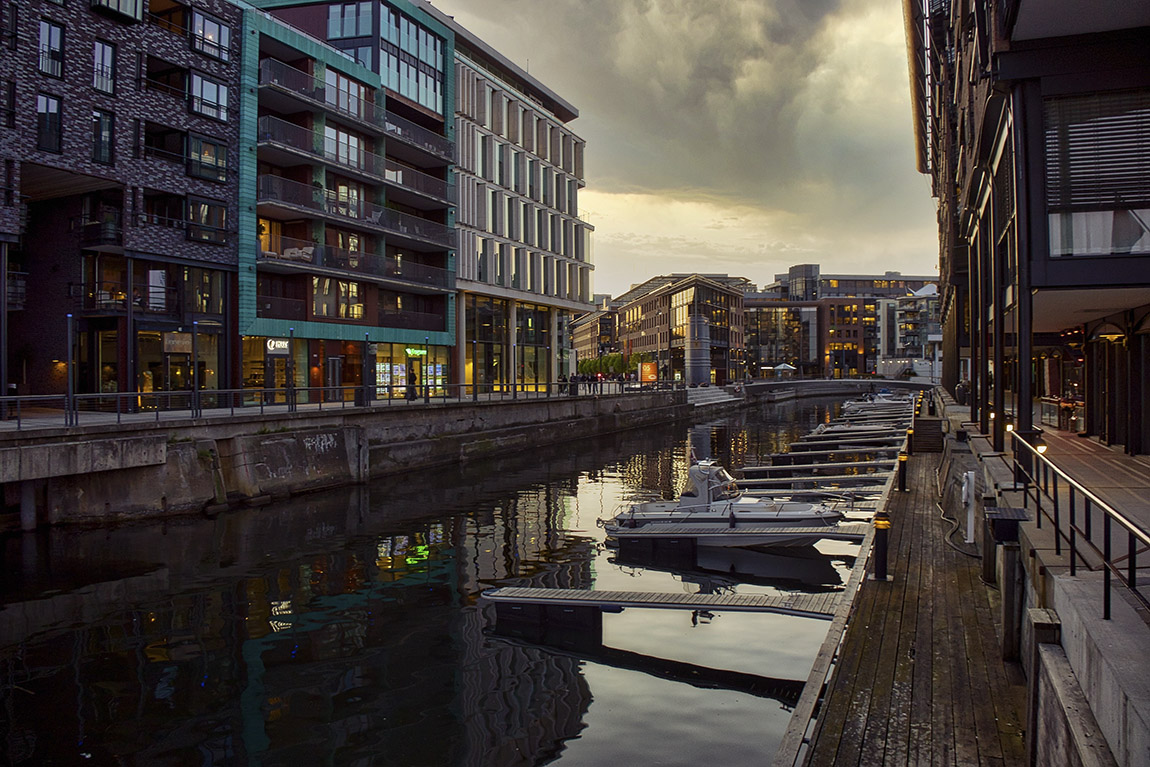
Canals in Oslo. Photo: Unsplash
Follow the river downstream – Lilleborg
To experience a Sunday on a weekend in Oslo the way the Oslo crowd does, head to Nydalen (if you want the long trip) or start your day at Jerusalem Bridge (for which the closest tram stop is Sandaker Senter, a two-minute walk away) and follow the river down-stream. On the way, you’ll pass by Lilleborg, a redeveloped factory area with a cosy square, independent shops, and a very popular improv theatre, Det Andre Teatret (The Other Theatre).
Take a break with coffee and Norwegian waffles – Hønse Lovisas Hus
Further down the river you’ll walk through multiple parks along the way, and soon reach Hønse Lovisas Hus (Hen Lovisa’s House) for waffles and coffee. Hen Lovisa is a fictional character from the 1911 play Ungen (‘The Kid’), by author Oskar Braaten, set in the area of Sagene, and the little red house was used in the 1974 film adaptation. The house, originally built in the 1800s, is currently used as a café and gallery with stunning views of a mid-town waterfall, and is said to have the best waffles in town.
Explore Oslo’s hipster mecca – Grünerløkka
Once you’re rested and have filled up on waffles, follow the waterfall and river onwards, but turn left onto the road once you get to Sannergaten. From now on, you’ll be walking through the neighbourhood of Grünerløkka – or Løkka, as Oslo people call it. Grünerløkka is considered one of the hippest neighbourhoods in Oslo, and is chock full of hipster and specialty coffee shops, vintage boutiques, restaurants, and art. Despite most of Oslo being shut on Sundays, Løkka’s independent shops tend to stay open for locals and tourists to browse the vintage goods. Along the way towards the Birkelunden park, you’ll pass by gems like German-inspired coffee shop Liebling and innovative restaurant Bass, but the real draw of Grünerløkka on Sundays is the markets. Most of the year, Sunday means market day, and Birkelunden transforms from a lazy park to a buzzing flea market filled with crafts and antiques.
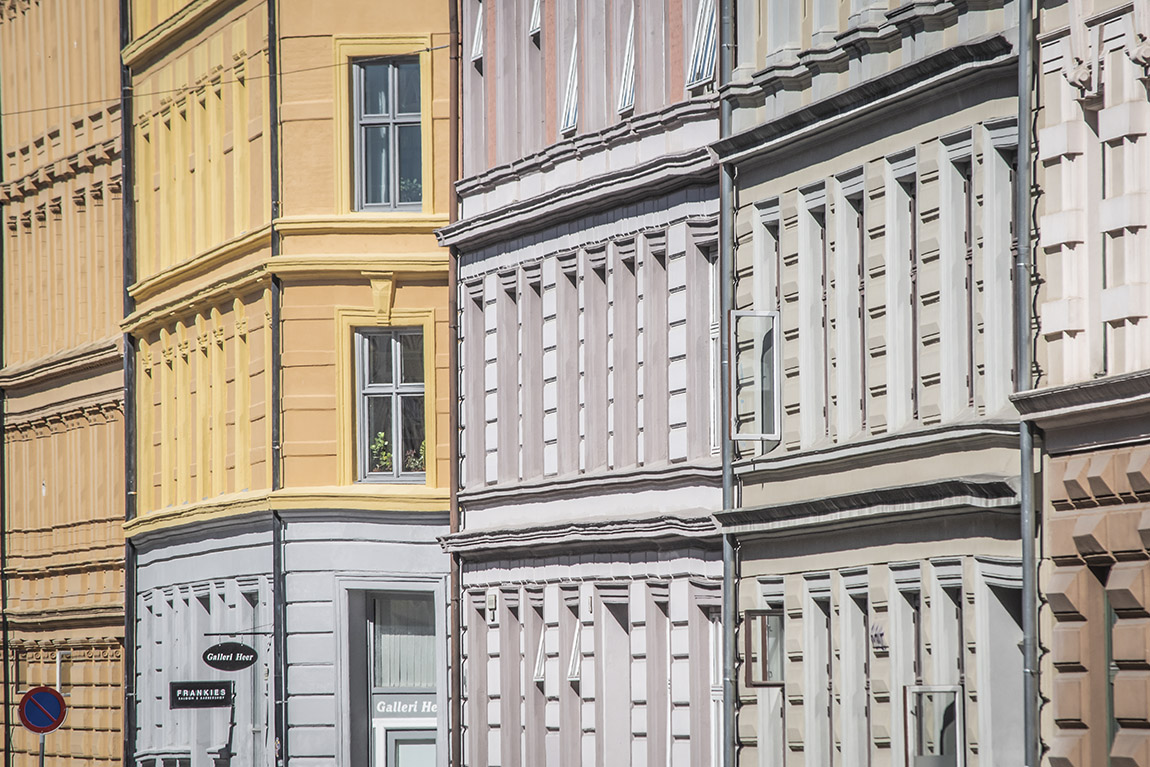
Buildings in Oslo. Photo: Unsplash
Coffee, street art and shopping – Vintage treasures
At the bottom of the park, you’ll be spoilt for choice whatever you’re in the mood for. Nighthawk Diner is an American diner with ’50s interior, jukeboxes and what is among the city’s best milkshakes and floats; Oslovelo is a bike repair shop complete with with bike rental, bar, and coffee shop; and for the vintage lover, Velouria Vintage is one of many treasure chests along the way. At Olaf Ryes Plass, you might find yet another market, but also a plethora of restaurants, like Villa Paradiso, one of Oslo’s most popular Italian restaurants. This is also an utepils hotspot, so if the weather is nice, grab a seat in the outside area of concert venue Parkteatret, and enjoy a cool beer in the sun. In the same area you’ll also find Tim Wendelboe, a world-famous espresso bar and micro roastery. Further down Løkka, vintage and coffee meet at the colourful Retrolykke kaffebar, and Manillusion, Robot and Frøken Dianas Salonger feed the Oslo crowd’s appetite for retro and vintage clothing.
Creative hub by the river – Blå
Turn right back down to the river, and head for Blå (Blue), one of the artsier parts of Oslo. Surrounded by constantly changing graffiti murals, live concert venues, galleries and rehearsal studios, Blå is a club and concert venue by night and a bar with outdoor seating near the river by day, and on Sundays it hosts an alternative market with arts, crafts and antiques. Its neighbouring Ingensteds (Nowhere) is another concert venue hosting the indoor part of the Sunday market, as well as serving food from various corners of the world. Walk back into town via the popular food hall Mathallen at Vulkan and Torggata with all its culinary temptations, or stay late for Frank Znort Quartet at Blå, the big band aiming to ruin your Monday since 1998 by entertaining from Sunday night and into the early hours of Monday morning. Acoustic sets from 4.30pm, electronic sets from 8.45pm, and from midnight until 3am, it’s nightclub time with pulsing rhythms and DJ-sets.
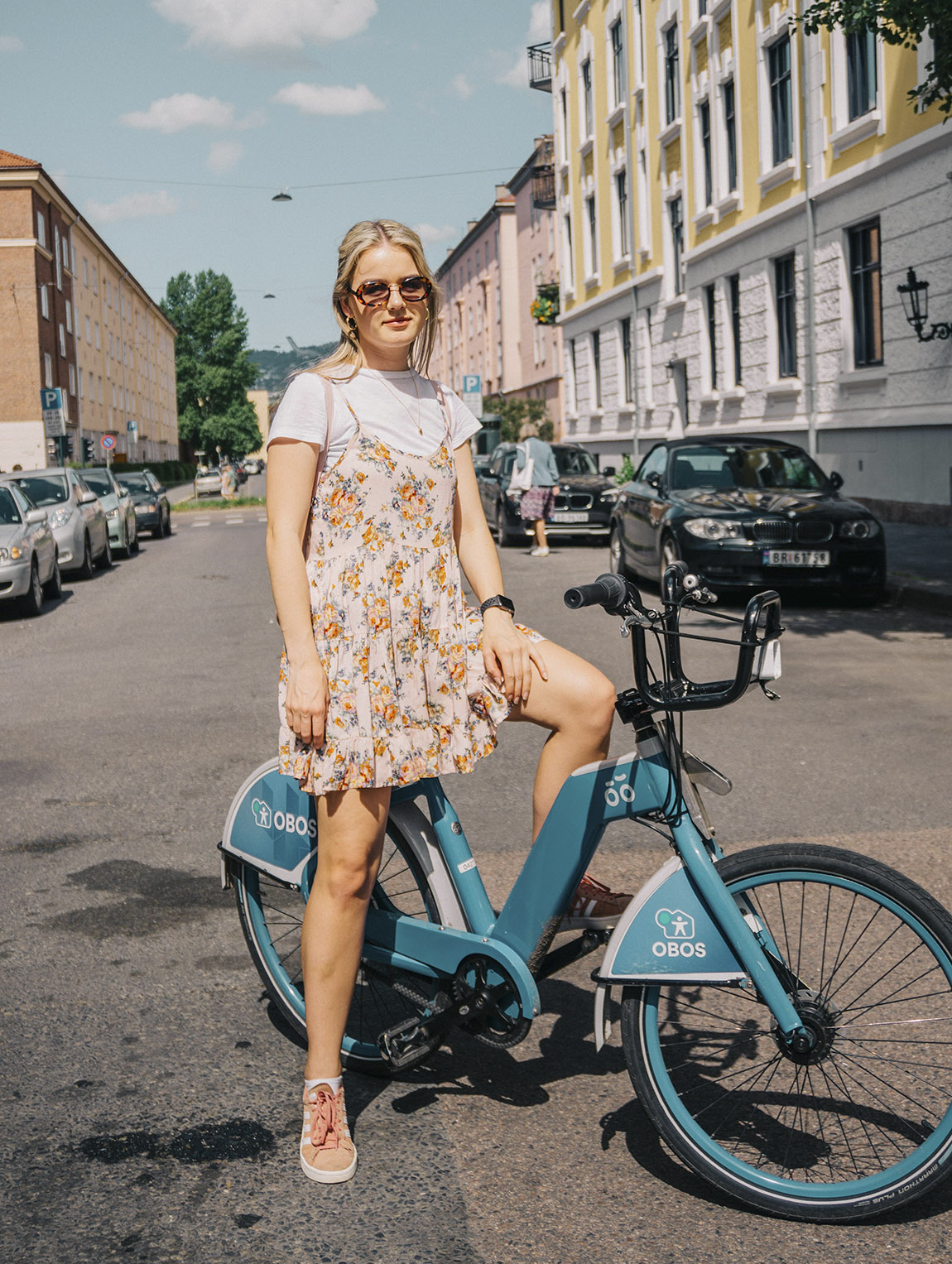
Oslo offers city bikes for visitors. Photo: Unsplash
Travel tips for a weekend in Oslo
Cash or card?
Norway is essentially a cash-less society. Most shops and restaurants still accept cash in one till, but people are encouraged to always pay by card or other contactless solutions. Note that public transport does not accept cash payments. This, in turn, saves tourists the exchange fee but might be challenging for those used to paying with cash everywhere in their home country. It often results in tourists running around with big wads of cash they’re trying to get rid of before leaving the country. For those staying longer, it’s also worth noting that more and more places accept payment through Norwegian payment app Vipps, for which you need a Norwegian bank account and phone number.
SOS Norway
Hopefully, this is knowledge you won’t be needing during your stay or weekend in Oslo, but if you do find yourself in a situation where you need medical or legal help, here’s what you need to know.
Norwegian emergency numbers differ from the UK, in that there are three separate numbers depending on what you need. For police, dial 112; for ambulance, dial 113; and if there’s a fire, it’s 110. Don’t worry, though – if you can only remember one of them, let them know what you need help with and they’ll put you through to the right place. English is spoken by all, so you don’t have to know what to ask for in Norwegian.
If you need medical assistance but you don’t quite need an ambulance, there are two general emergency rooms in Oslo, one centrally located at Storgata, and one at Aker Sykehus a bit further out from the city centre. The Storgata emergency room specialises in injuries. They both tend to illnesses, and once you get there, they will talk to you and determine the urgency of your issue, and then tell you where to wait and how long the wait is expected to be. Urgent issues are prioritised. To contact the emergency rooms in advance, or for questions, call +47 116117 or +47 23 48 72 00.
If you need the police, they can be seen walking, driving or riding horses along the streets, and are always happy to have a chat. If you need attention urgently, either call the emergency number or, if you’re in a place with security guards, let them know and they can contact the police for you.
If you need help with a stolen passport or any other issues for which you need the British Embassy, it can be found at Thomas Heftyes gate 8, 0244 Oslo, or you can call them on +47 23 13 27 00. Their hours are 9am to 4pm Monday to Friday.
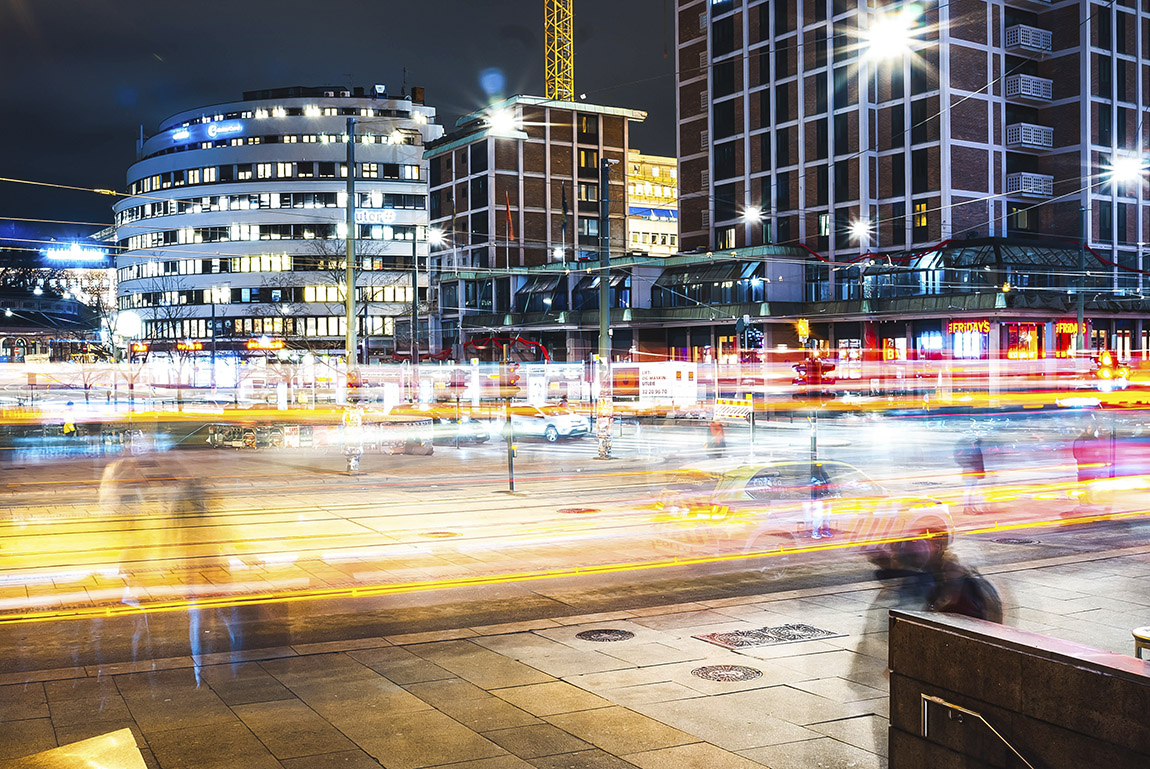
Night time in Oslo. Photo: Unsplash
Proper etiquette for a weekend in Oslo
Tipping? The concept of tipping is practised very loosely in Norway. Most Norwegians never carry cash, and most restaurants, bars, taxis and cafés use card machines where you’re shown the full amount and get the chance to add however much you want. Most Norwegians round up the final price to the closest full number, so if a drink costs 77 NOK, you round it up to 80 NOK. For huge meals with several courses you may add a bit more, but food and drink are already expensive and wages are high, so tipping is just a way to show that you really appreciated the service and food. Some places include a service charge on the bill, so no extras need to be added unless you’ve ended up with lots of spare change that weighs you down. Tipping is a good way to get rid of coins, in a country where fewer and fewer places accept cash as payment.
Being loud on your weekend in Oslo?
On the surface, Norwegians are quiet and reserved people, and unless alcohol is involved, people keep their voices respectfully quiet. You won’t often hear shouting or loud people on the streets or in shops or restaurants. However, when alcohol is involved, Norwegians tend to loosen up a bit and the volume rises, as well. Most areas, even in central Oslo, have residential spots, so be respectful when leaving bars or clubs as there will be people living nearby. The reservedness also includes talking to people you don’t know. Walking up to strangers to chat is unheard of, unless you need to ask for directions.
Being late?
Don’t. Being late is seen as disrespectful, and if asked, most Norwegians will list people being late as their number-one pet peeve. If dinner starts at 5pm, be there at 5pm, not at 5.30pm, or the food may well be gone. Of course, accidents happen and every now and then being late can’t be helped, but if you know that you’re about to be late, let the rest of the group know. If notice is given, people are usually very forgiving. If you’re late to an appointment, call in advance and let them know; often they can rearrange to accommodate you. If no notice is given, there tends to be a ten-minute window before the appointment is cancelled, in which case you might still be charged.
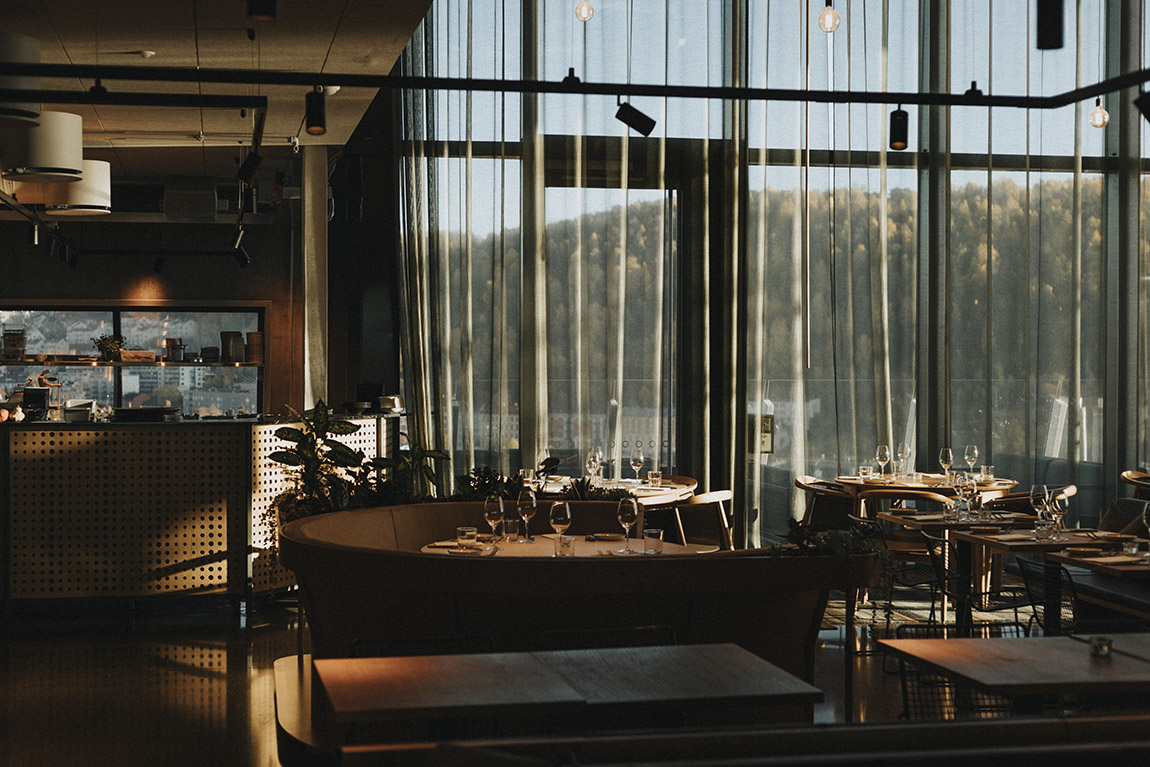
Wining in Oslo. Photo: Unsplash
Wining on your weekend in Oslo
Oslo Mekaniske Verksted €
Low-key bar close to Oslo Central Station with plenty of indoor and outdoor seating. No food is served, but bringing your own is allowed.
Tøyenbekken 34
Angst Bar €
In the narrow Strøget passageway by Youngstorget, you’ll find the hidden, colourful gem Angst, a tiny but popular bar with limited space inside, but a larger, covered outside seating area.
Torggata 11
Café Sara €
A dark and cosy bar with a large back garden. Open until 3.30am, it’s the last stop of the night for many an Oslo citizen.
Hausmanns gate 29
Bar Albatross €€
Low-key, stylish and relaxed bar in the heart of Torshov with art for sale and signature cocktails. Crowded seating areas, but most people don’t mind sharing a table or sofa.
Torshovgata 5, 0476 Oslo
Merkur Bar €€
Japanese-influenced bar Merkur at St. Hanshaugen serves cocktails, natural wines and sake, and is a stylish yet low-key place to enjoy a night out with friends or colleagues
Bjerregårdsgate 5a
Den Gamle Skobutikken €€
Den gamle Skobutikken (‘The old Shoe Shop’) is a stylish bar several storeys high. For those who aren’t scared of heights, it has a secluded rooftop terrace at the top of an old spiral staircase
Torggata 9B
Torggata Botaniske €€
Quirky bar with greenery covering walls and ceilings, as well as its own greenhouse, reflecting the name of the bar. Drinks to match, using homegrown herbs and plants in the cocktails.
Torggata 17B, 0183 Oslo
Stratos €€
Event space and summertime rooftop bar in functionalist building Folketeaterbygningen. Stratos has earned the nickname Roof of the City, due to its location on the 12th floor with amazing views of Oslo. Go in the summer when they open the rooftop terrace and let you enjoy the sunset or the bright summer night with good friends and good drinks.
Youngstorget 2
Svanen €€€
Located in what used to be an old pharmacy, Svaneapoteket, Svanen is a classy cocktail bar right in the middle of Karl Johan, the main street of the capital. The warm, wooden interior and details from the pharmacy have been preserved, giving the place an atmosphere you won’t find anywhere else. Try a classic cocktail with a Svanen twist, or one of their own signature cocktails, like Tyttebær or Smørbukk.
Karl Johans gate 13
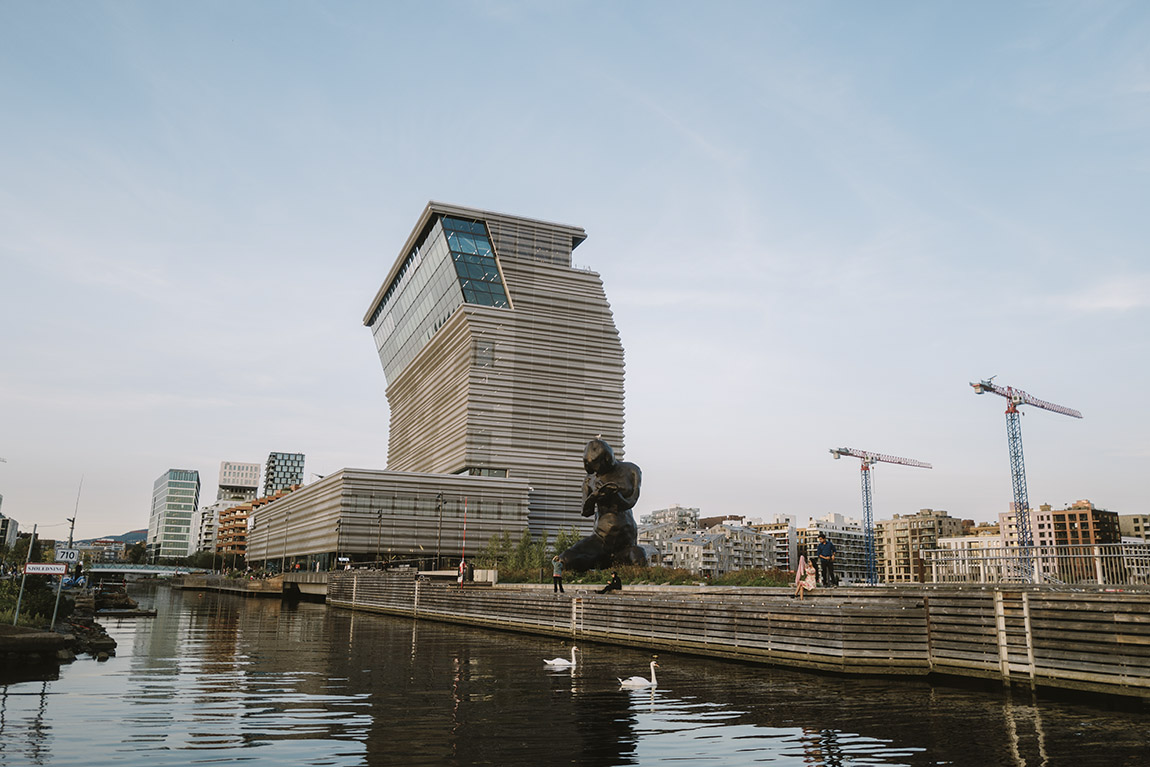
Munch, Oslo. Photo: Unsplash
Dining on your weekend in Oslo
Grådi €€
Innovative neighbourhood restaurant at Tøyen, unafraid to experiment with new ingredients, flavours and combinations. This is one of the most popular brunch spots in the city, so reserving a table is advised – particularly in the summer, when the outdoor seating area is buzzing with life.
Sørligata 40
Postkontoret €€
Charming neighbourhood restaurant for the whole city, serving pizza, salads, sandwiches and good vibes. Postkontoret also arranges concerts, quizzes and other events, and is a favourite among the hip, young Oslo crowds.
Facebook: toyenpostkontor
Hagegata 27
Louise Restaurant and Bar €€ – €€€
Maritime restaurant Louise is situated right in the middle of idyllic hotspot Aker Brygge, with a view of boats and the fjord. It’s got a popular outdoor serving area and a menu focusing on Norwegian ingredients and international inspiration.
Stranden 3
Villa Paradiso €€ – €€€
Oslo’s favourite Italian restaurant with authentic food, a homely atmosphere, and a reputation reaching far beyond the city. Expect queues in the summer.
Olaf Ryes plass 8
Ekeberg Restauranten €€€
Located next to Ekebergparken in the Ekeberg hillside, Ekebergrestauranten offers fine dining with one of Oslo’s most stunning views. With a seasonbased menu and fresh ingredients, Ekerbergrestauranten offers new and traditional flavours.
Kongsveien 15
Tjuvholmen Sjømagasin €€€
Located next to the fjord and the Astrup Fearnley Museum at Tjuvholmen, stylish seafood specialists Tjuvholmen Sjømagasin sells fresh fish and shellfish at its own fish and deli shop, and also offers courses and wine tastings.
Tjuvholmen allé 14
Theatercaféen €€€
Viennese-style café with historical roots, serving high-end afternoon tea, brunch and cocktails, as well as lunch and dinner. Located at Hotel Continental, and opened in 1900.
Stortingsgaten 24/26
The Thief Food Bar €€€€
Exclusive food bar located at The Thief hotel, serving contemporary Nordic cuisine with a global twist. Expect local produce and freshly caught fish and shellfish.
Landgangen 1, O252 Oslo
Arakataka €€€€
A favourite among both food critics and customers, Arakataka is a high-quality restaurant located right in the heart of Oslo’s concert and theatre district. Norwegian ingredients with a continental flair make for a great evening.
Mariboes gate 7B
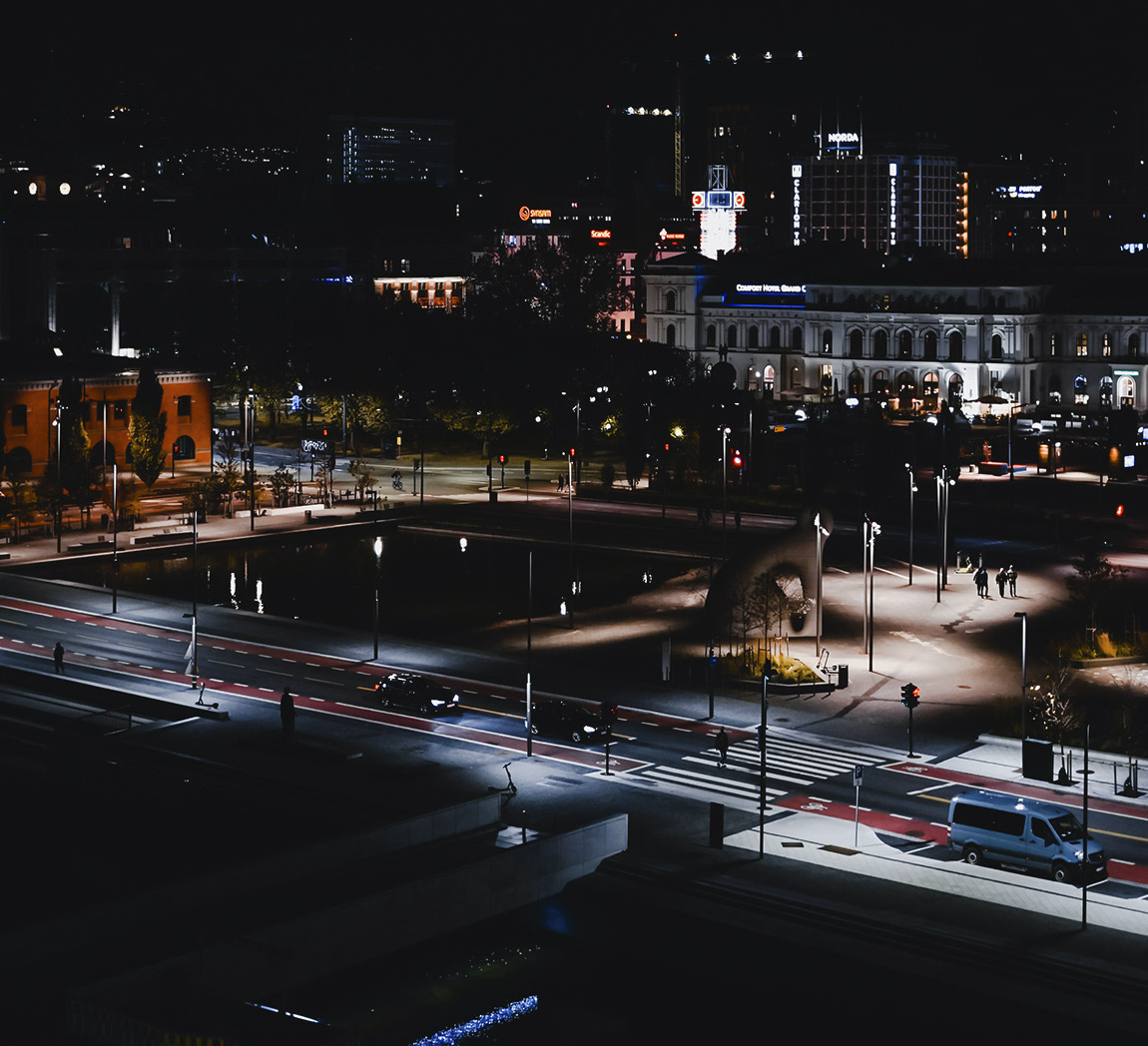
Sunday night in Oslo. Photo: Unsplash
Read on further below to make the most of your weekend in Oslo:
Find out about a typical day in Oslo
Oslo must-see five sculpture parks
Artful architecture to explore on a weekend in Oslo
Festivities in Oslo (Festligheter) – Celebrate 17 May!
A weekend in Oslo can be downloaded for free as a PDF by pressing the arrow on the top left of the e-book above.
For good deals on transport and experiences, buy an Oslo Pass lasting 24, 48 or 72 hours. The pass includes travel on all public transport across the city as well as suburbs and districts (Oslo as well as Lillestrøm, Nittedal, Asker, Ski, Nesodden and Drøbak), and includes free access to several museums and attractions, as well as discounted restaurants, sightseeing and activities. The Oslo pass is available online below.
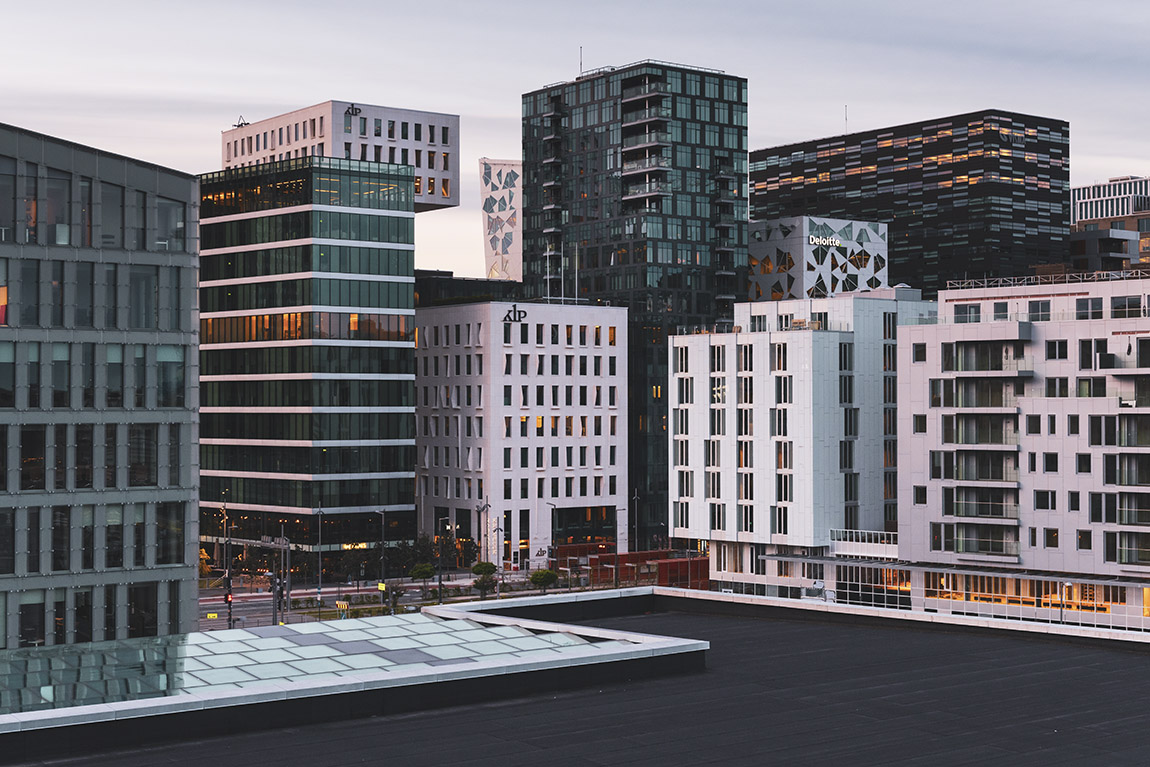
Photo: Unsplash
Subscribe to Our Newsletter
Receive our monthly newsletter by email



